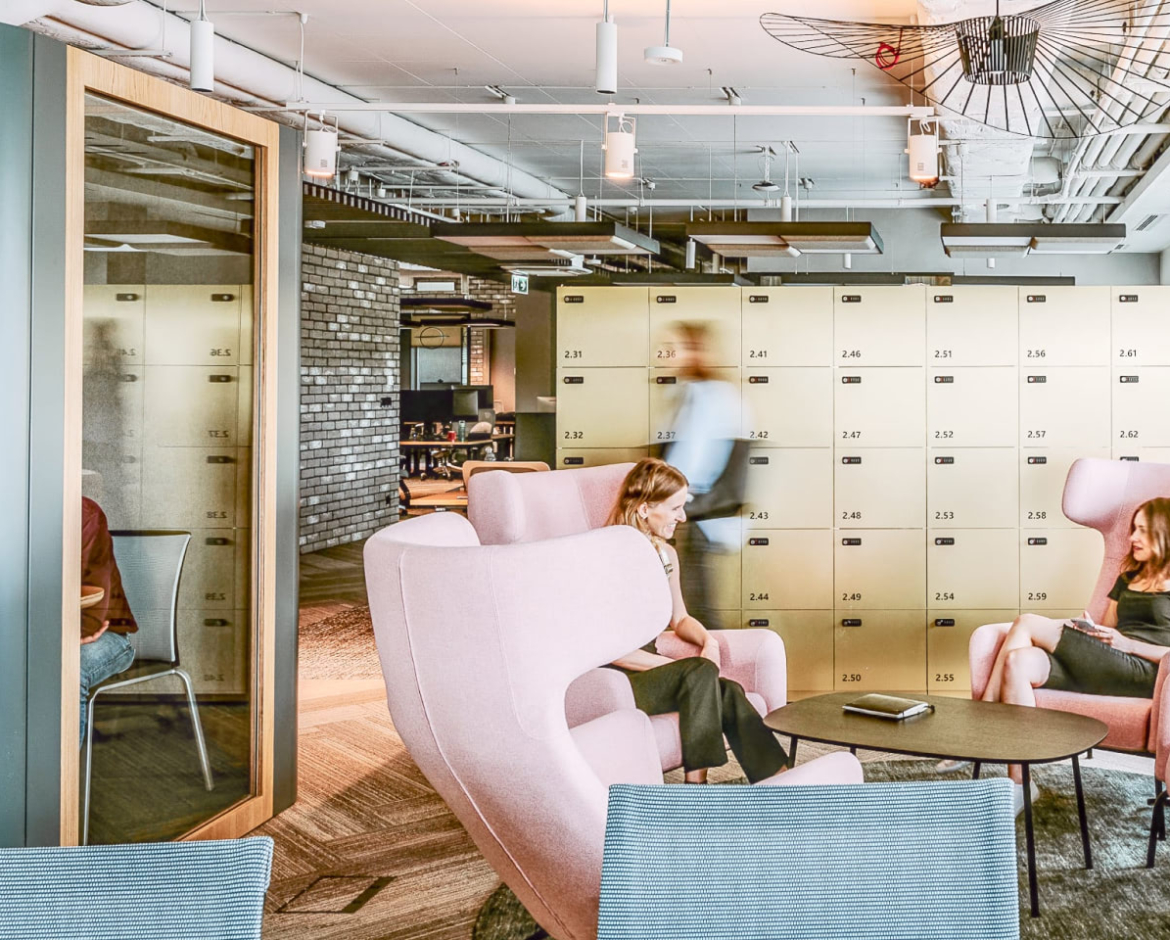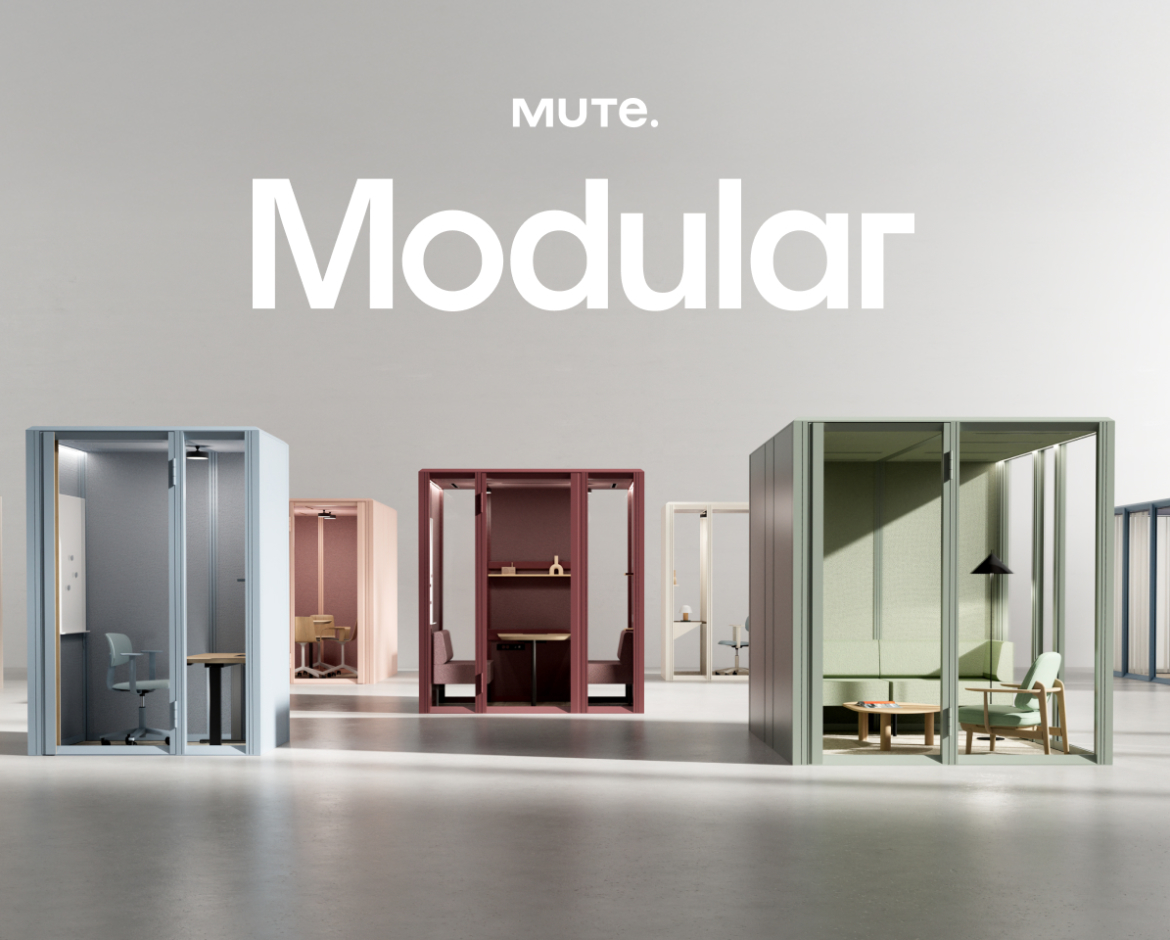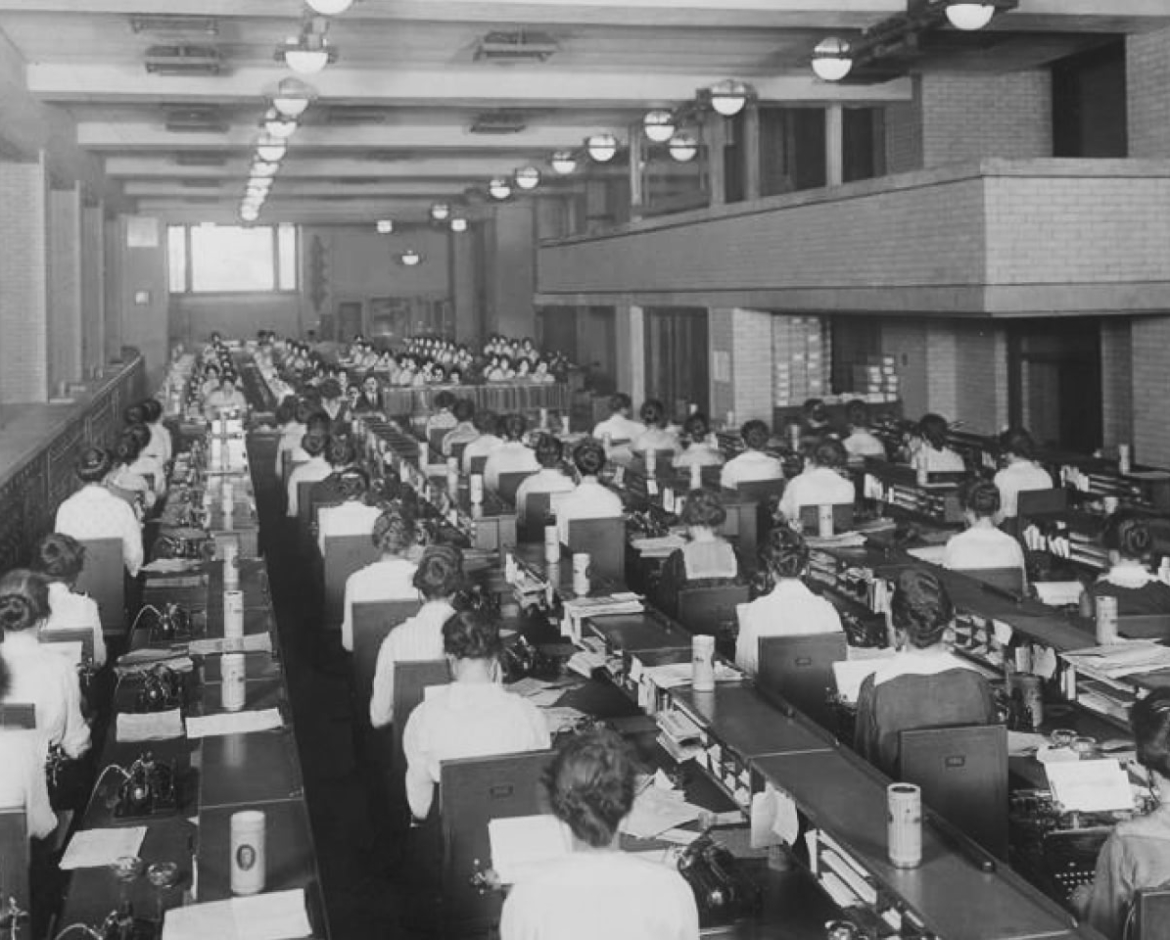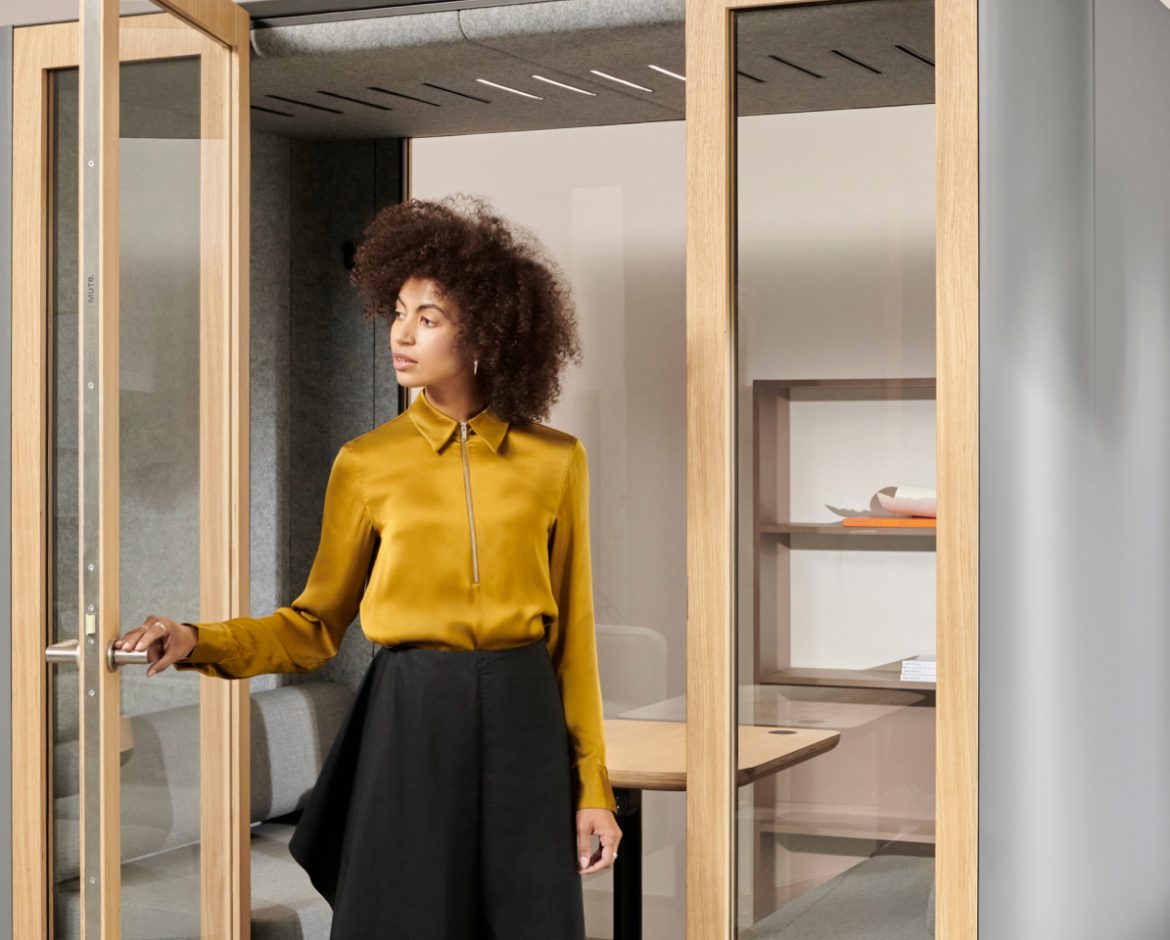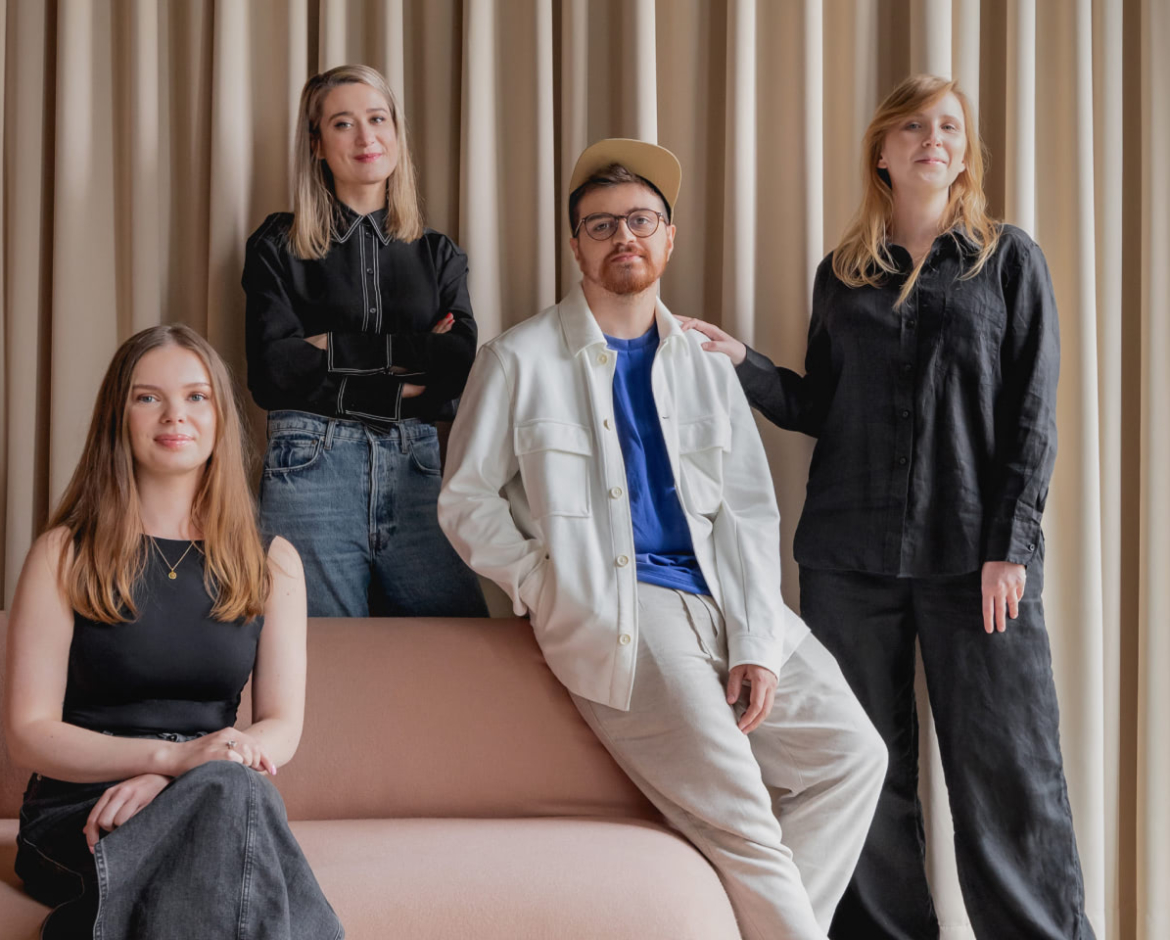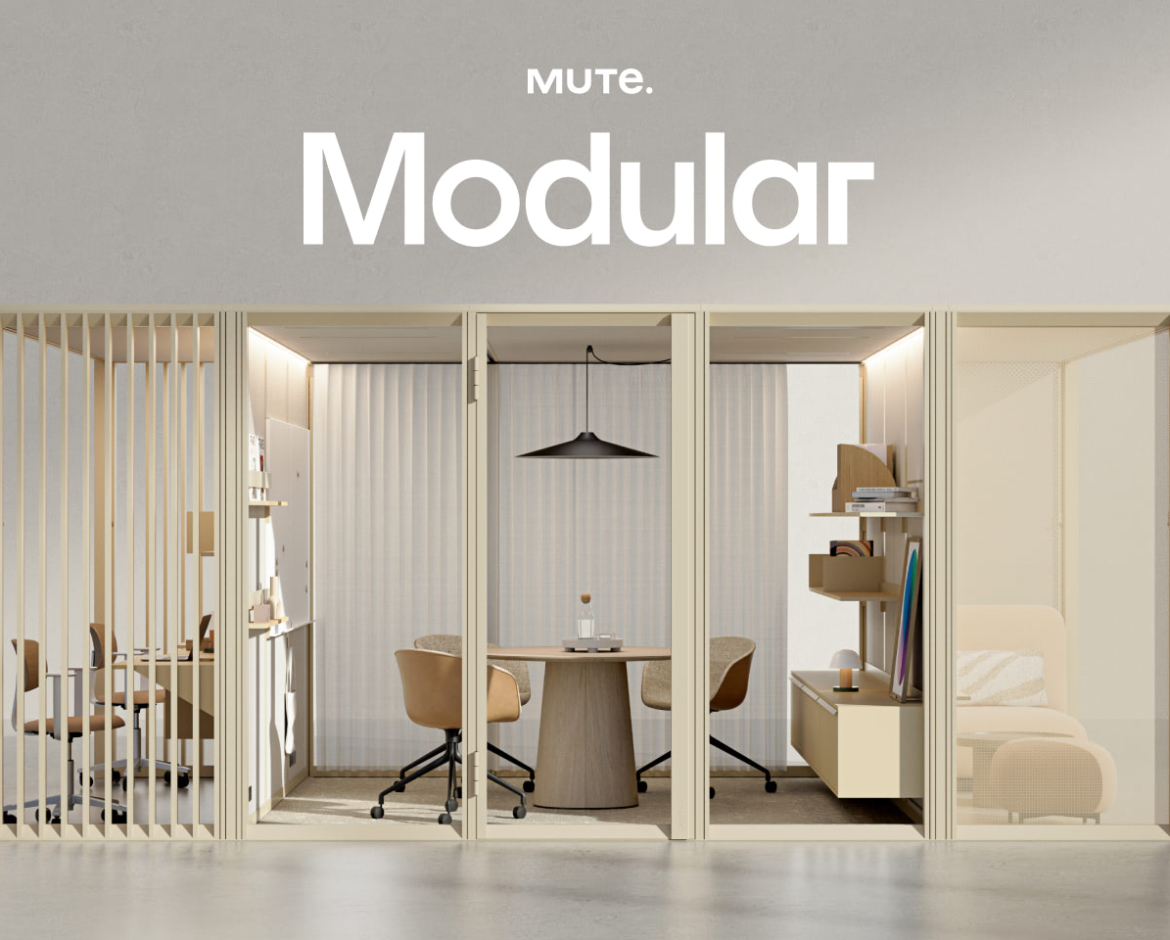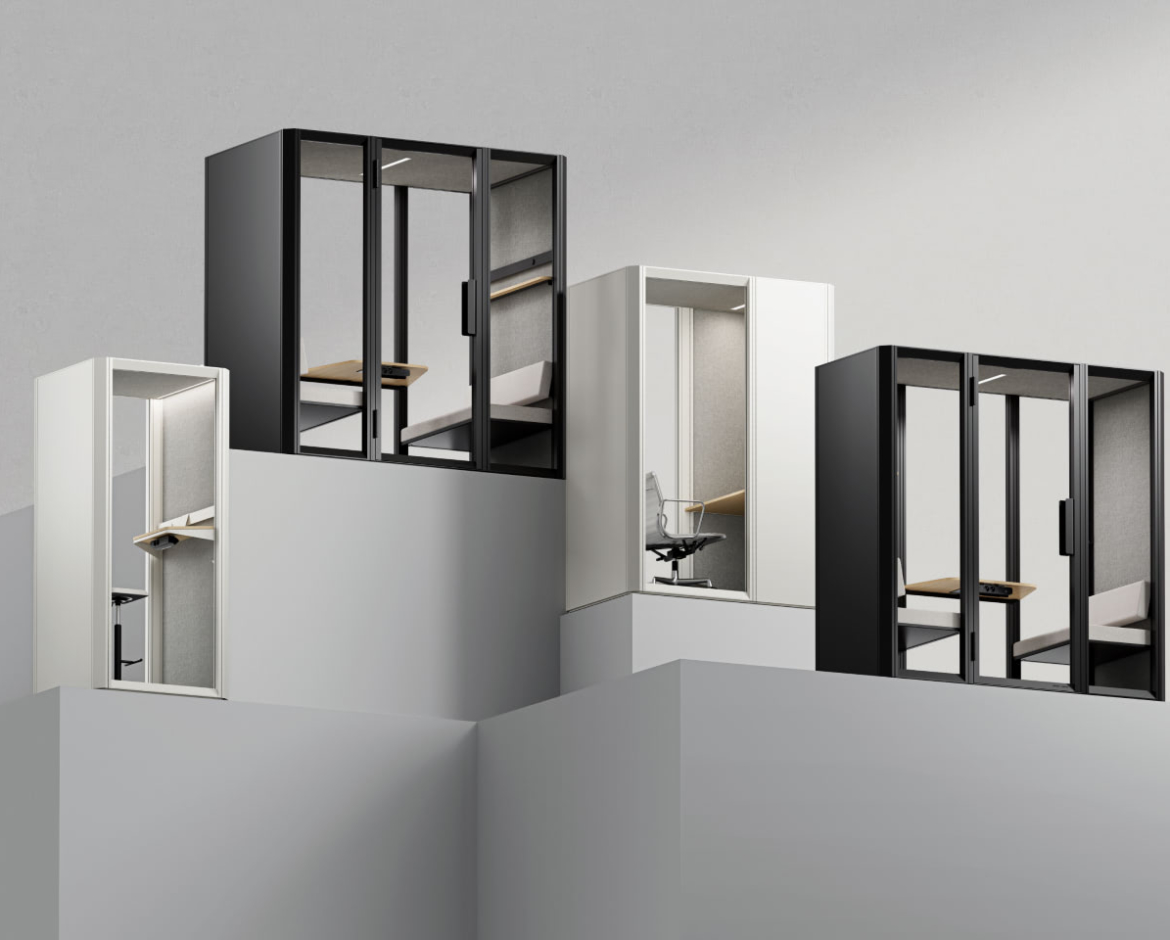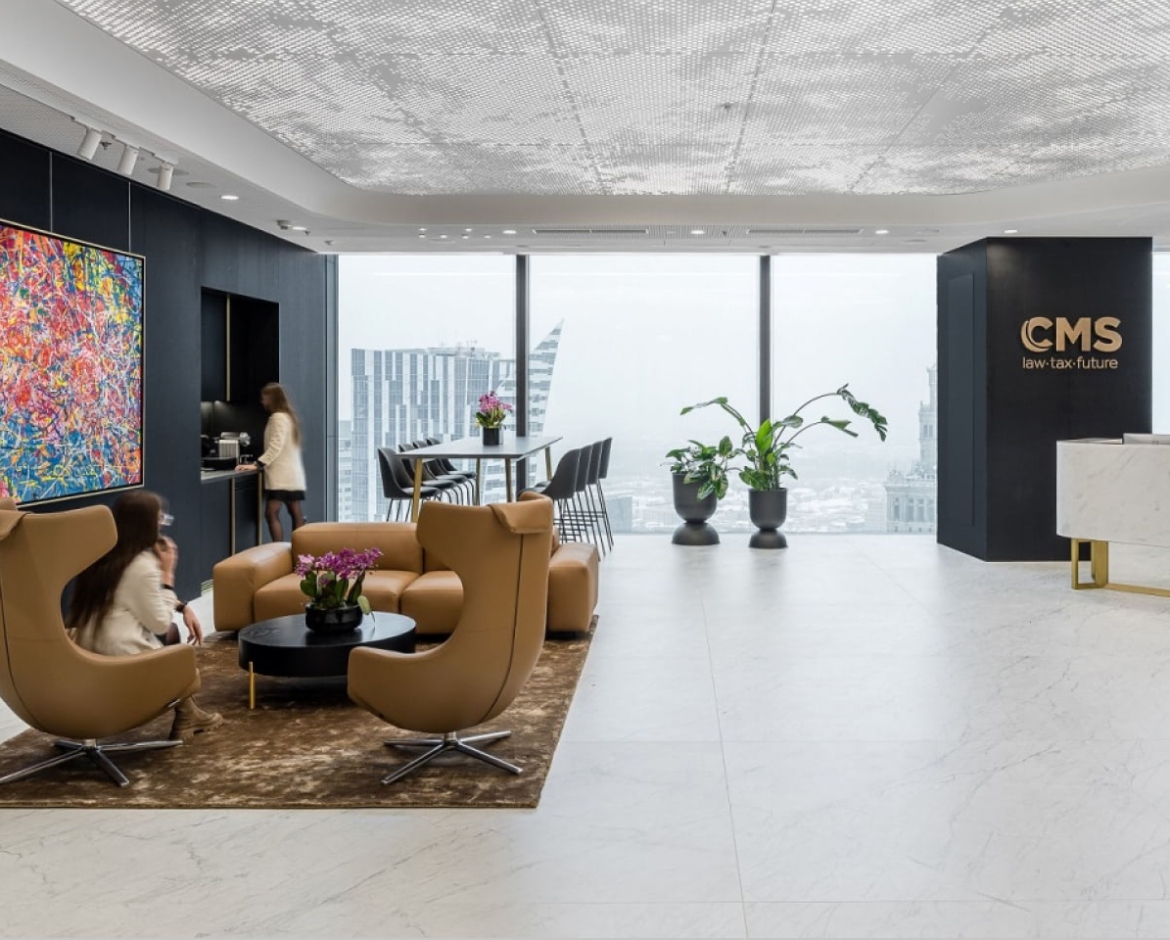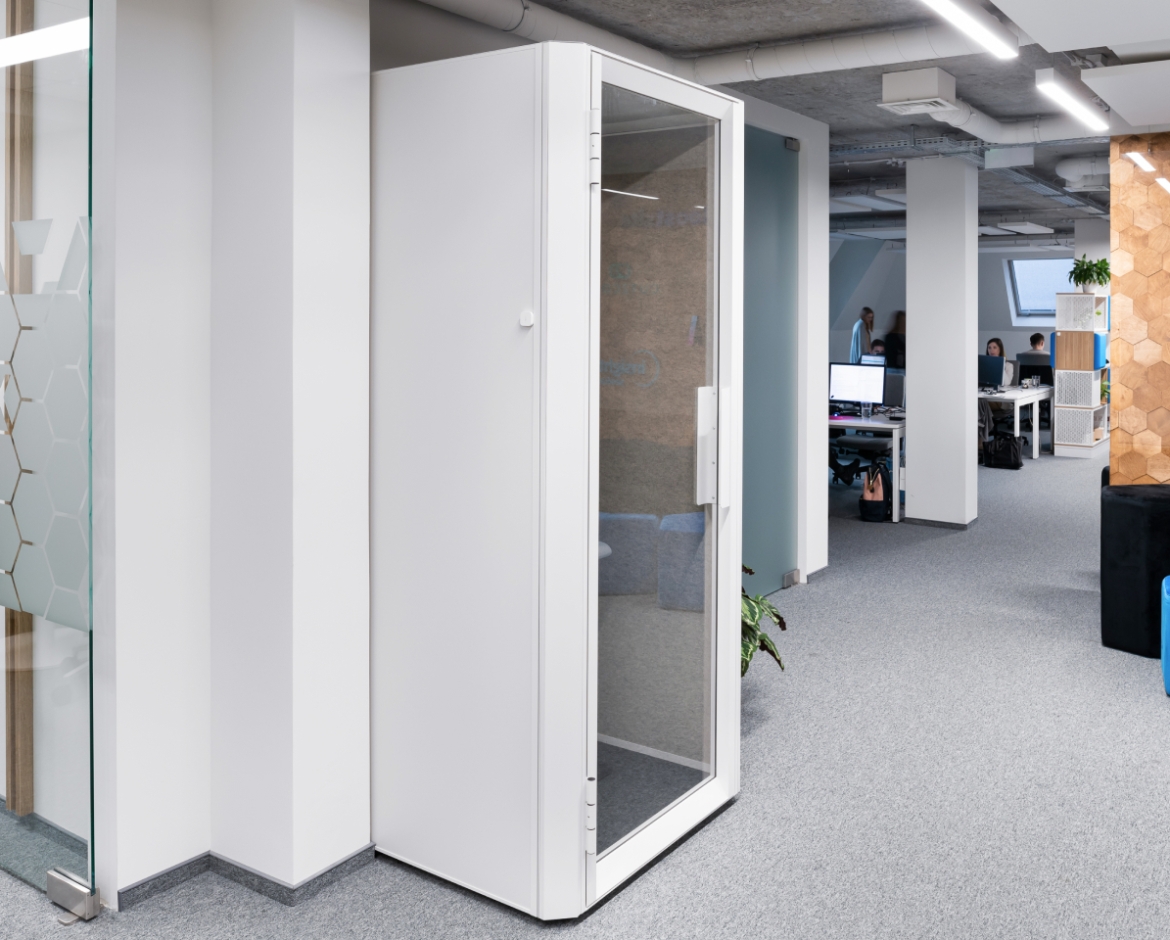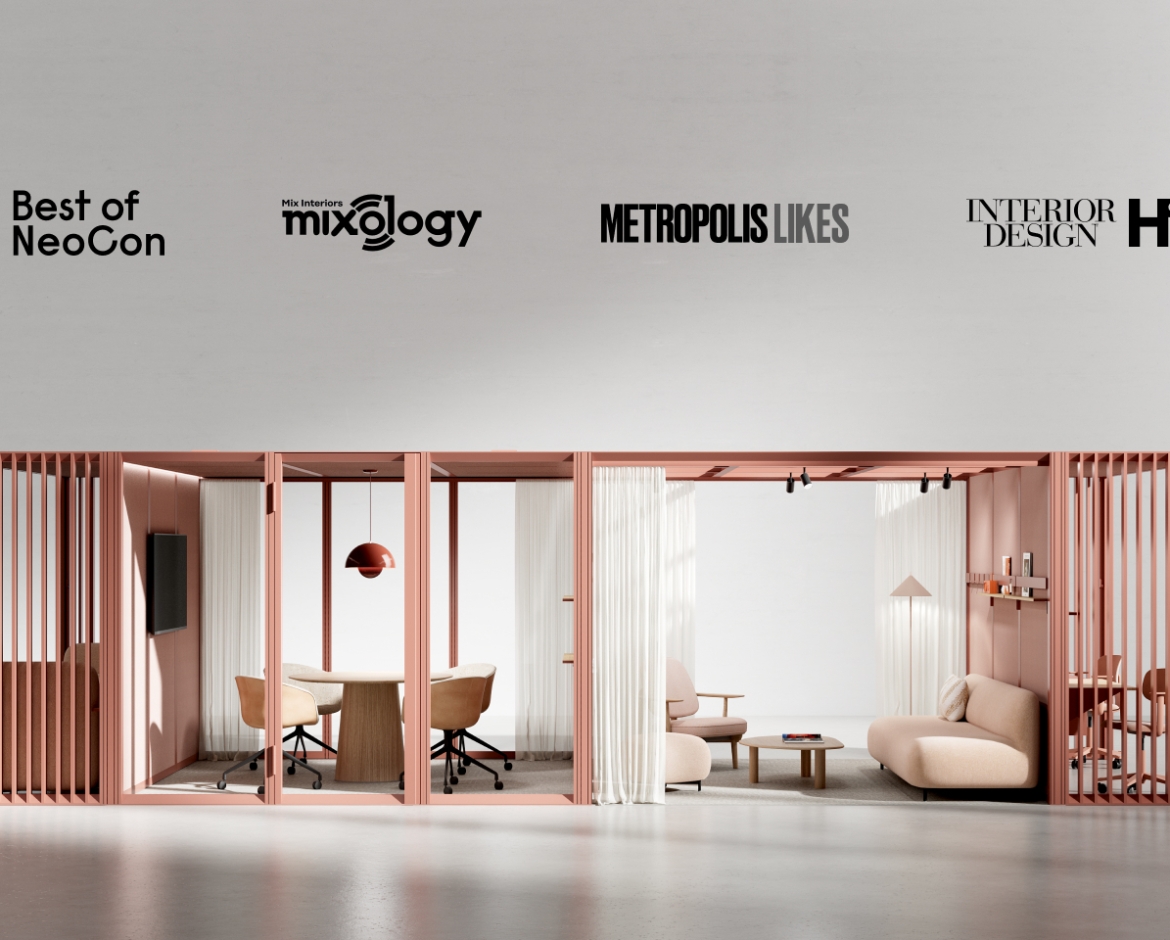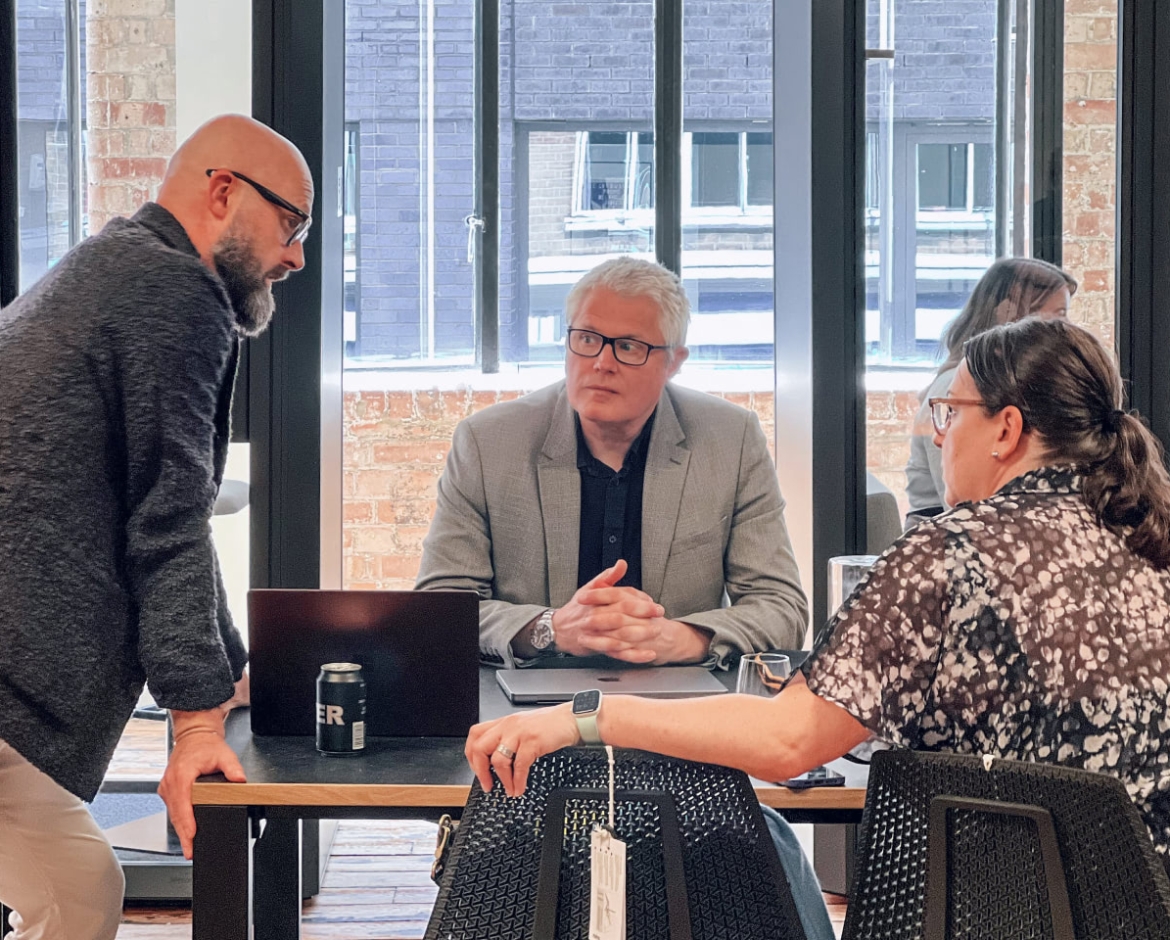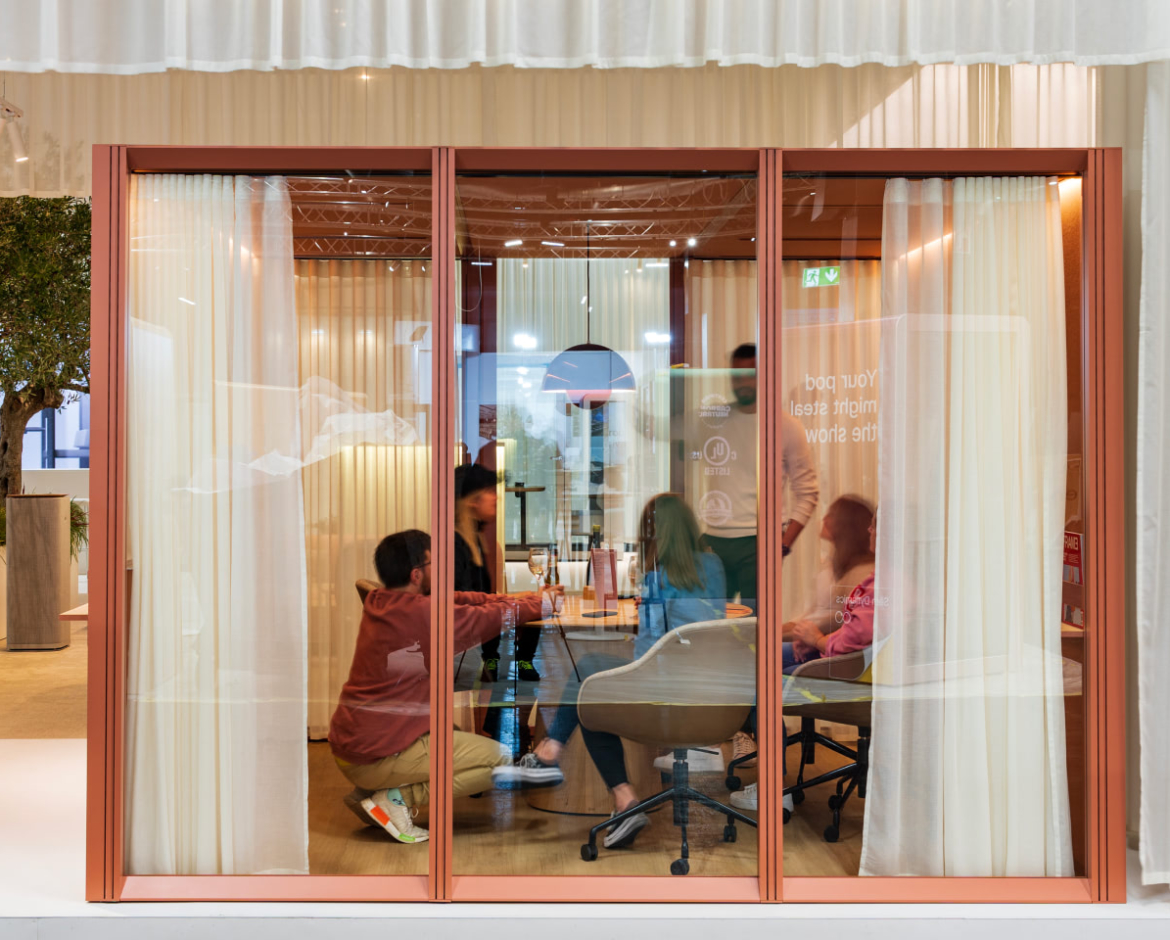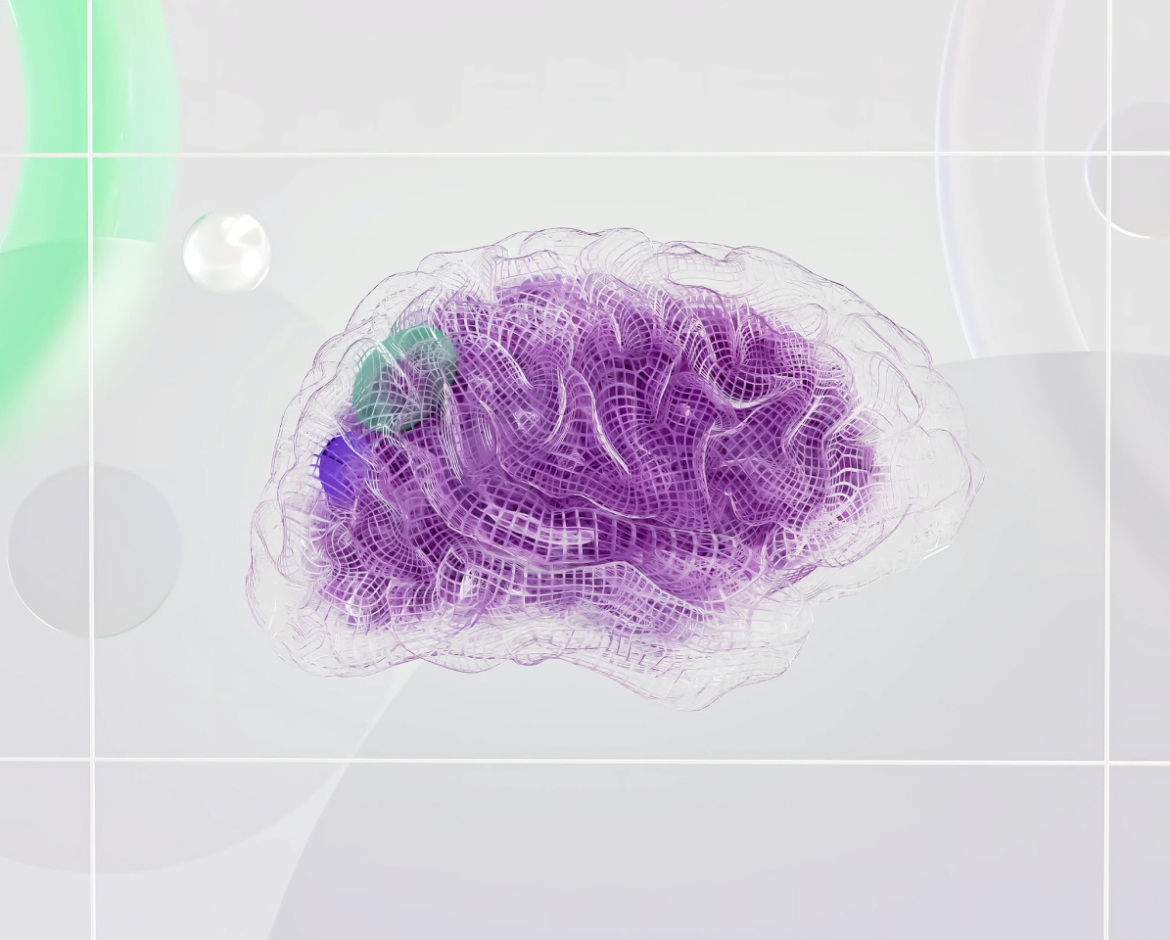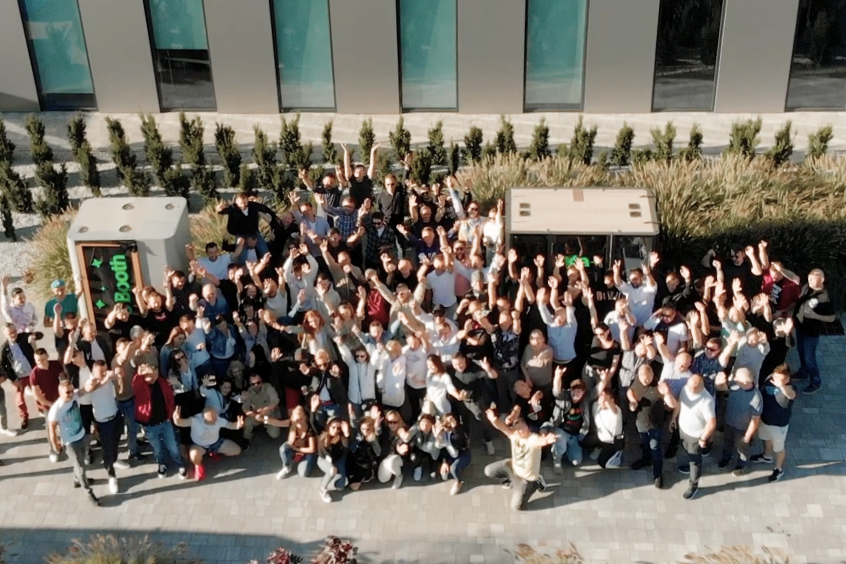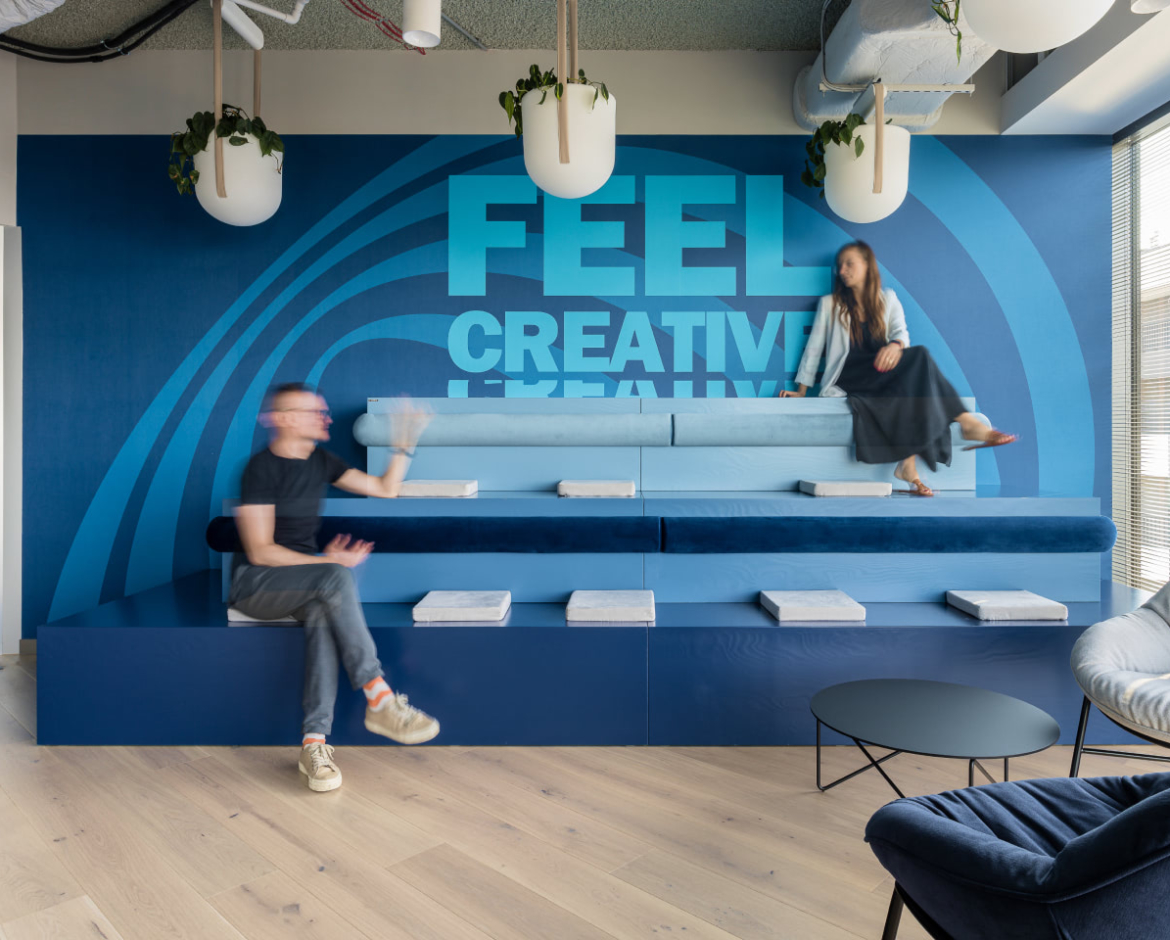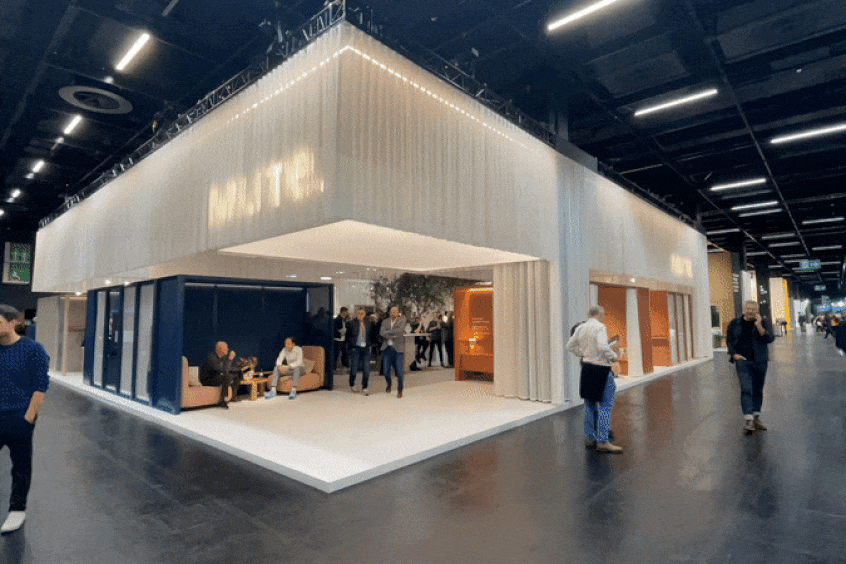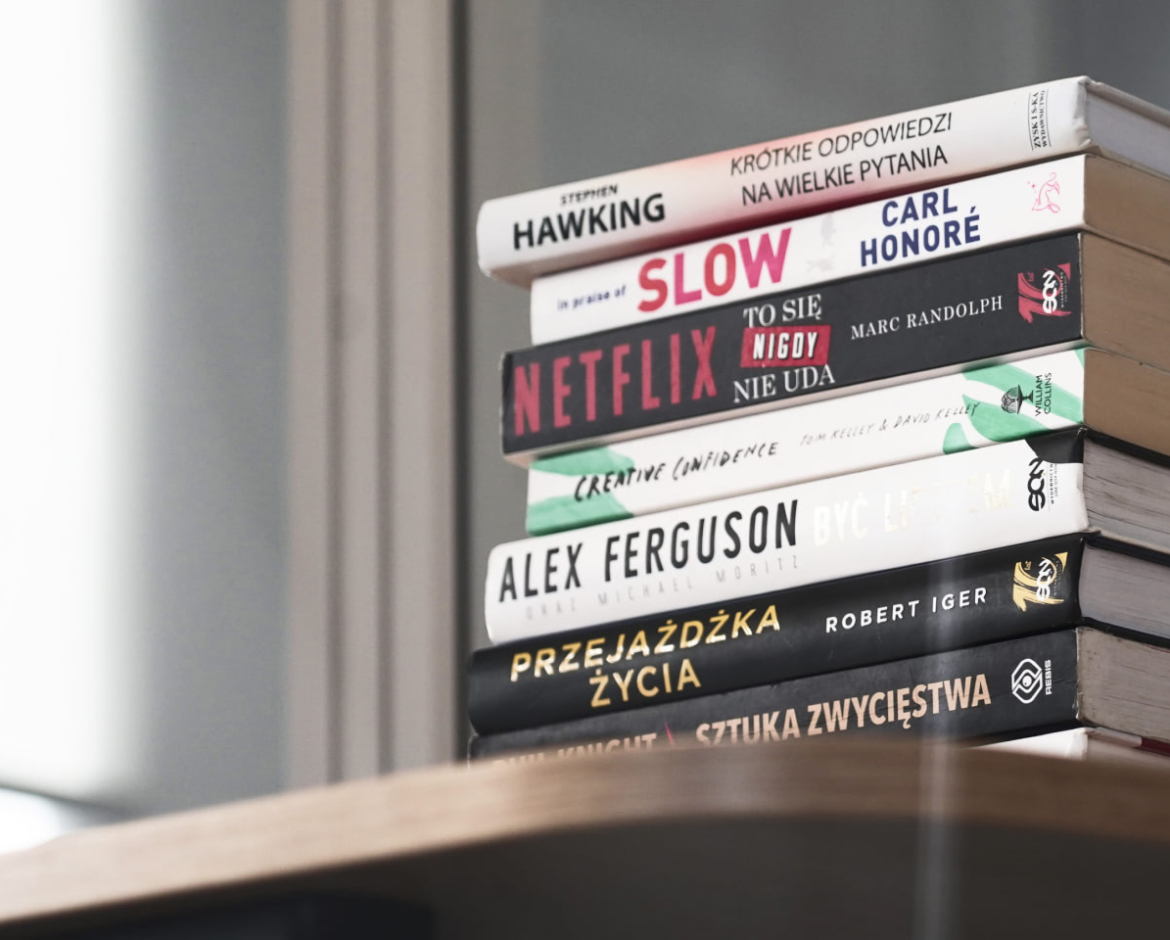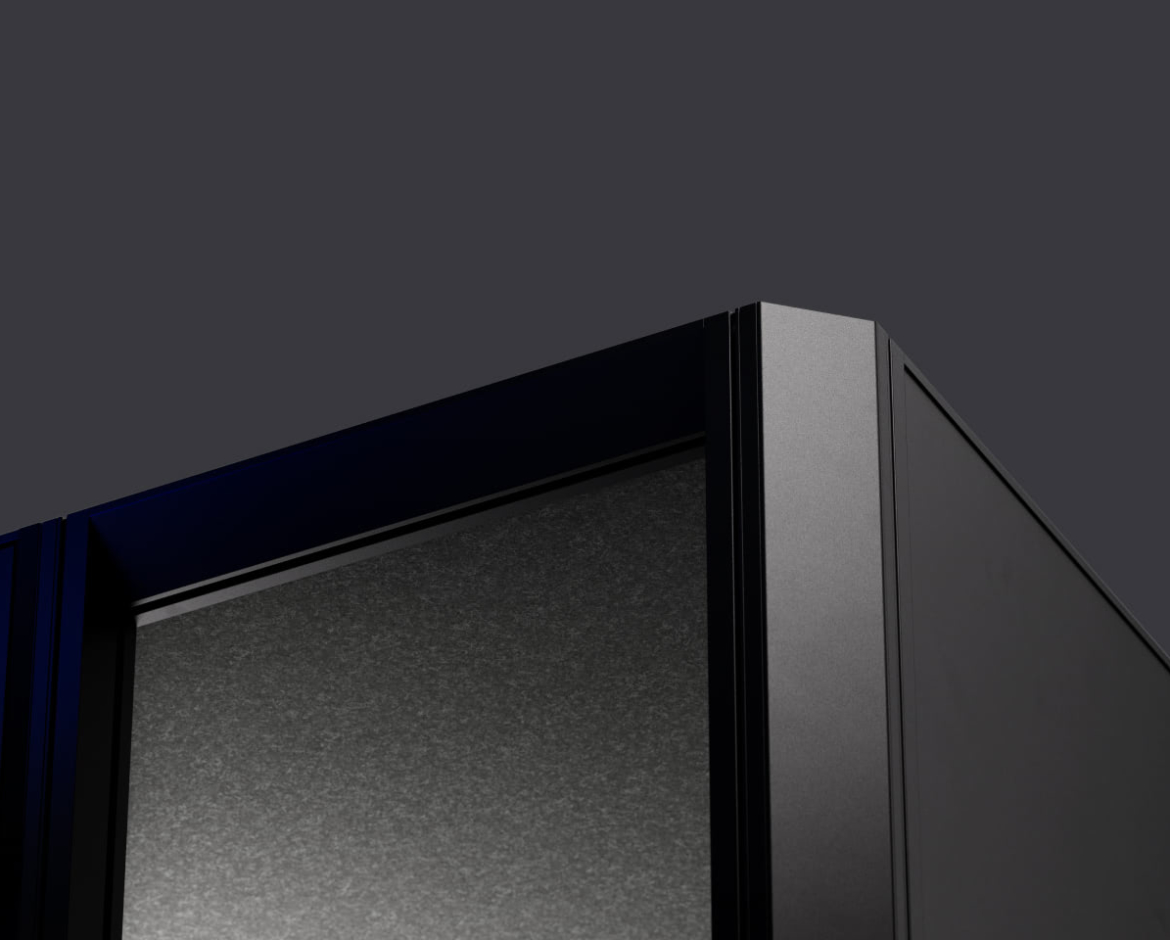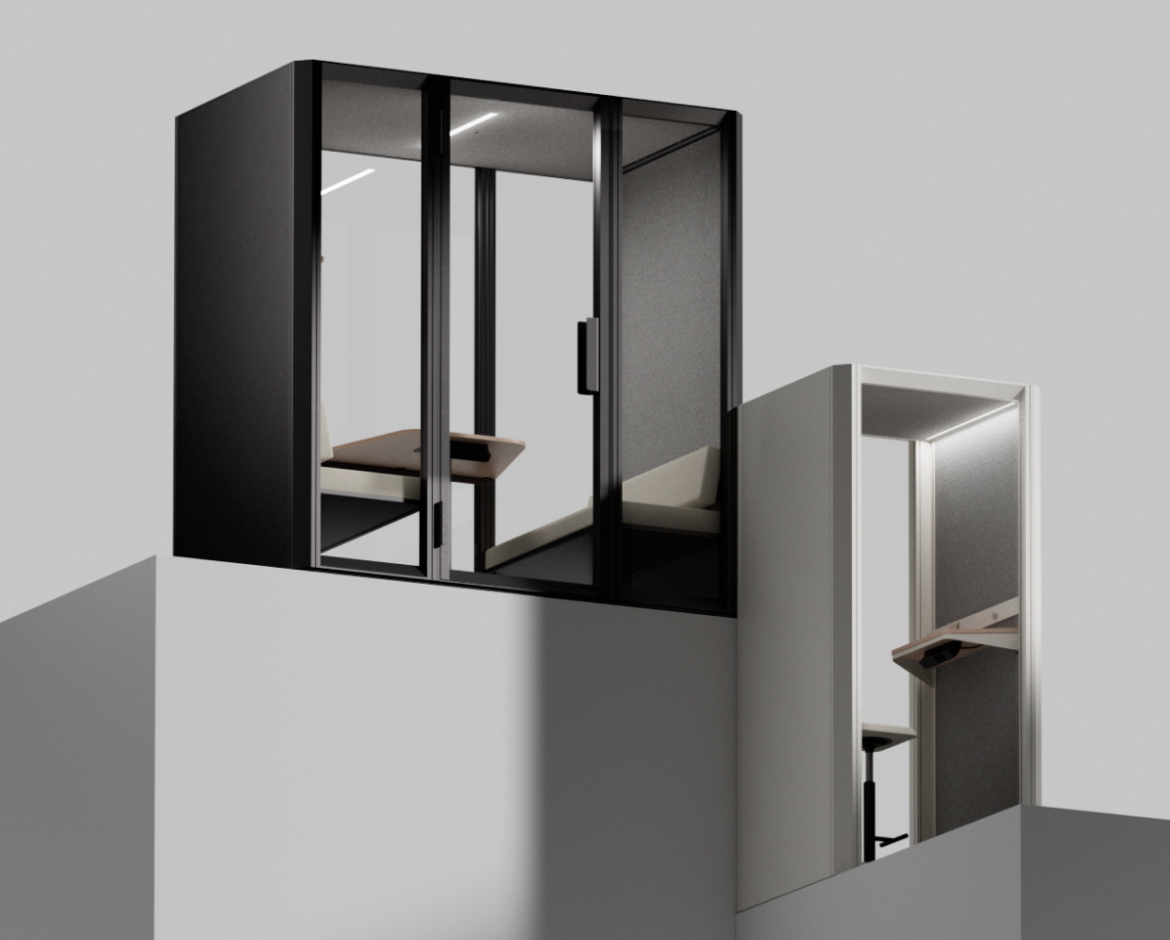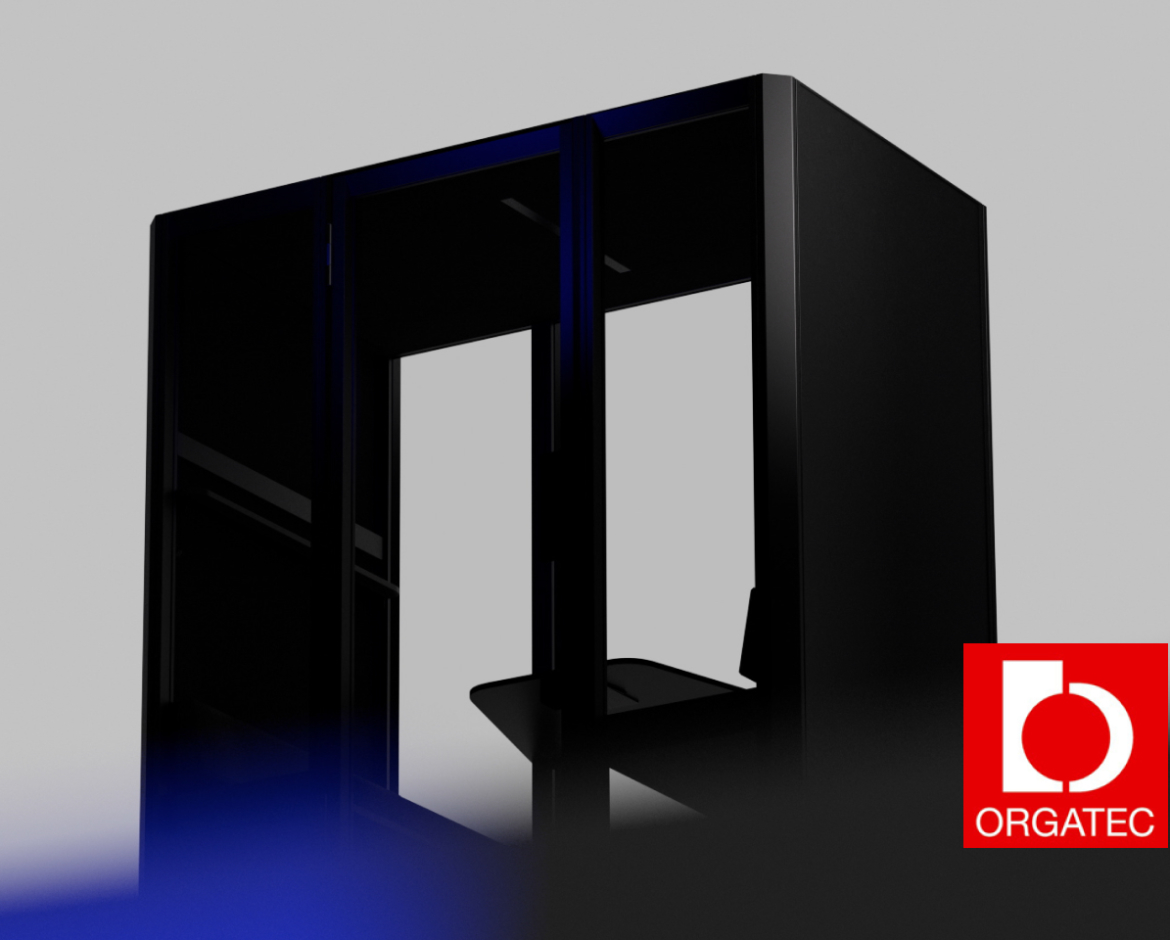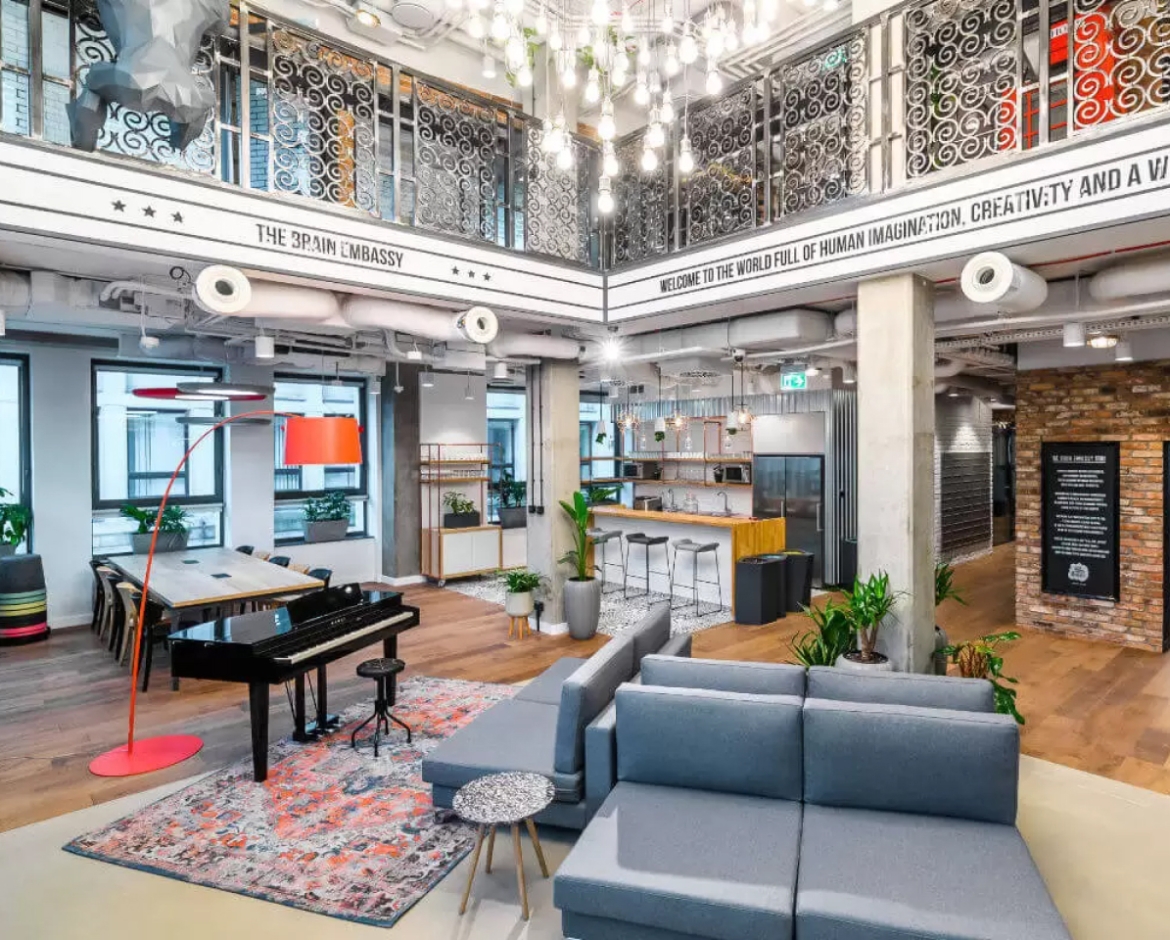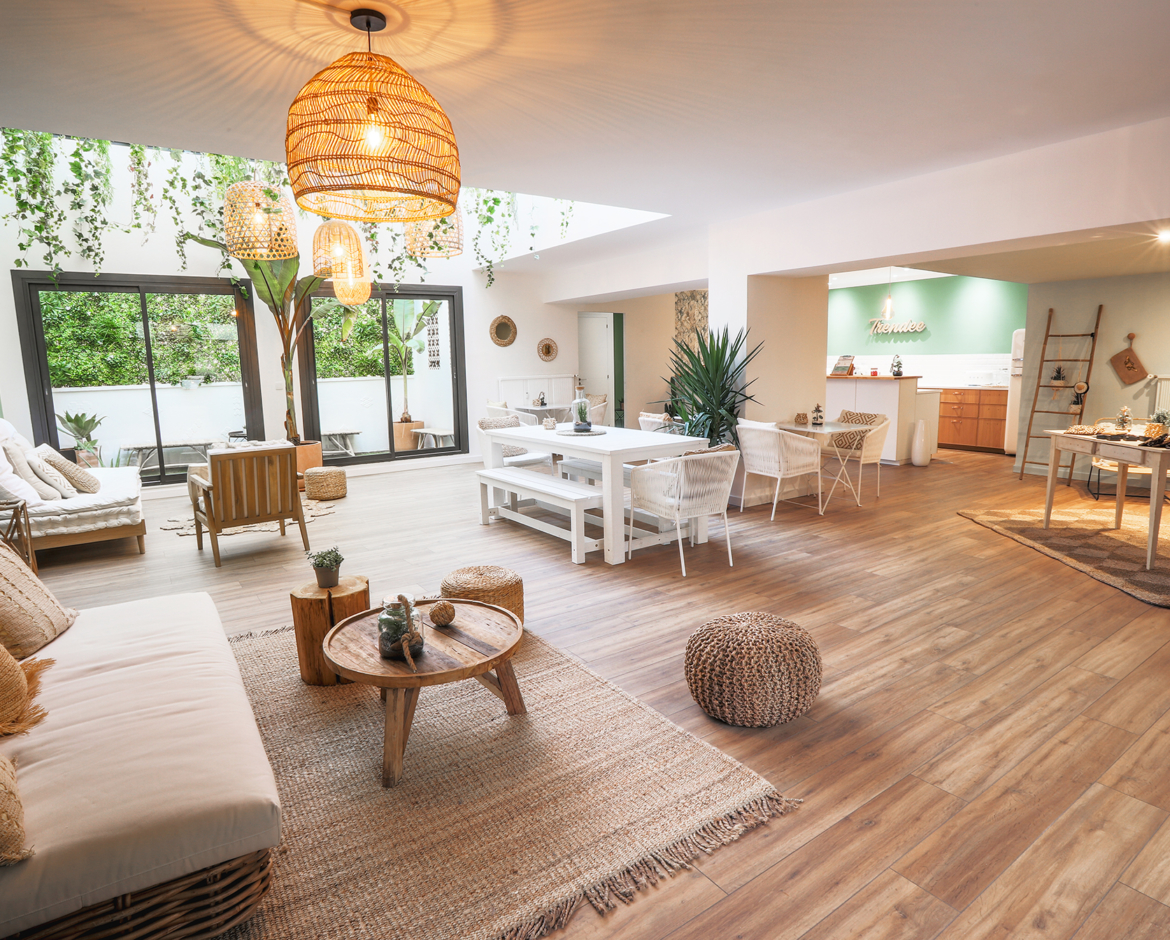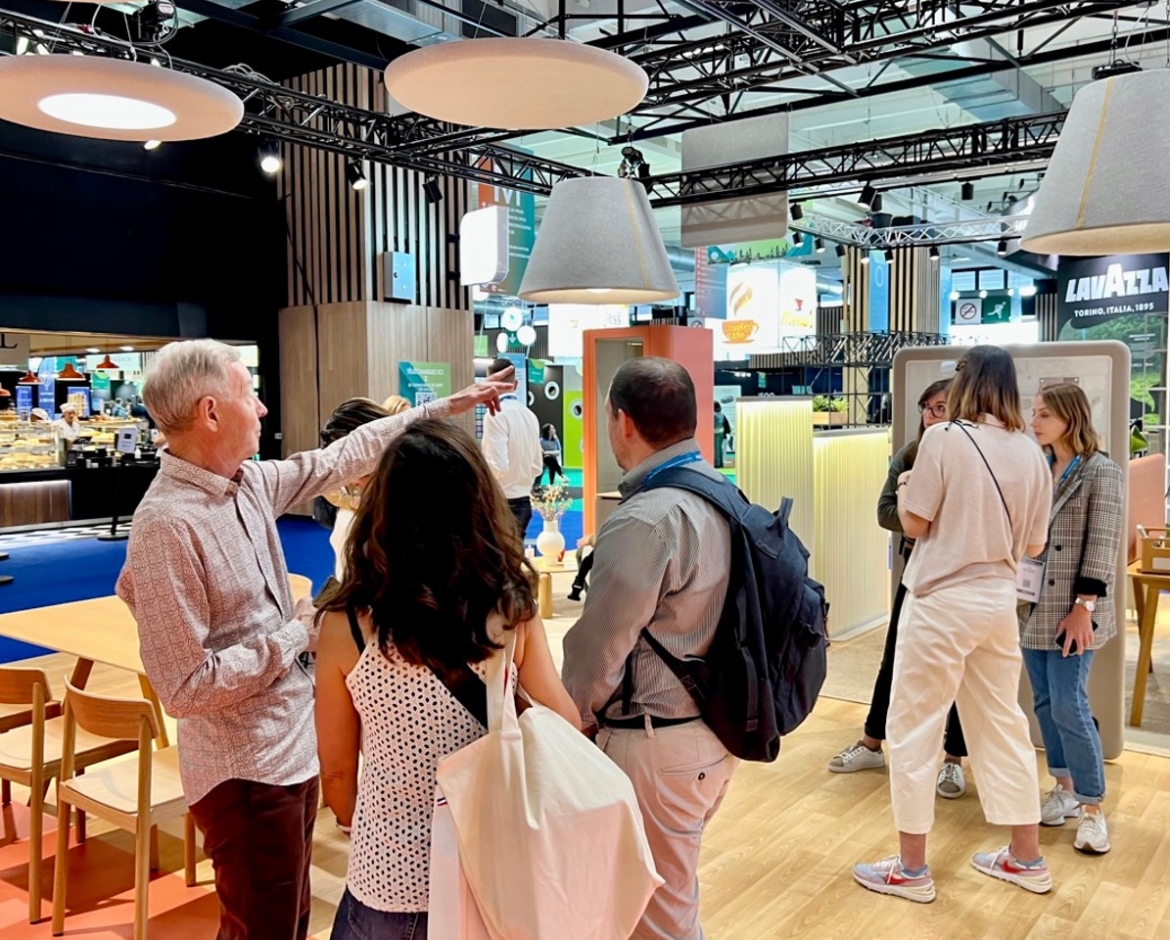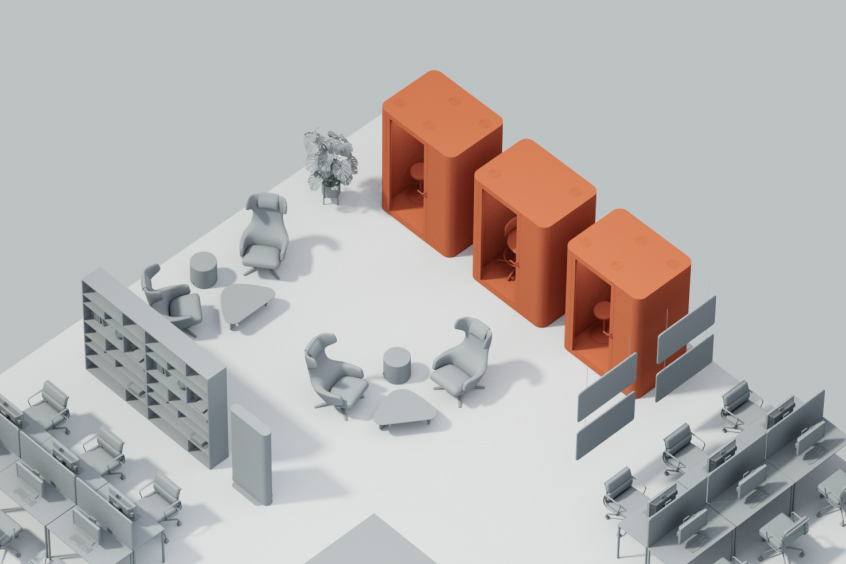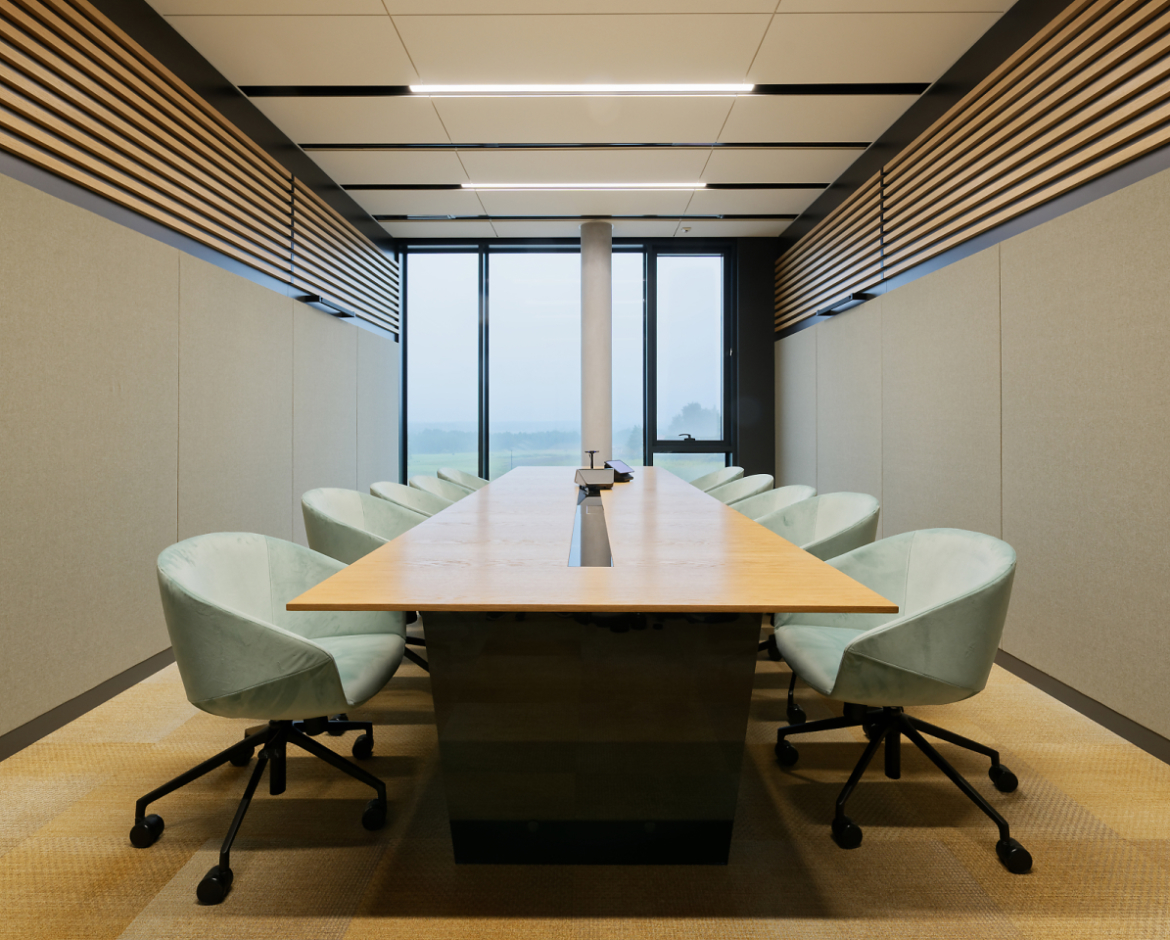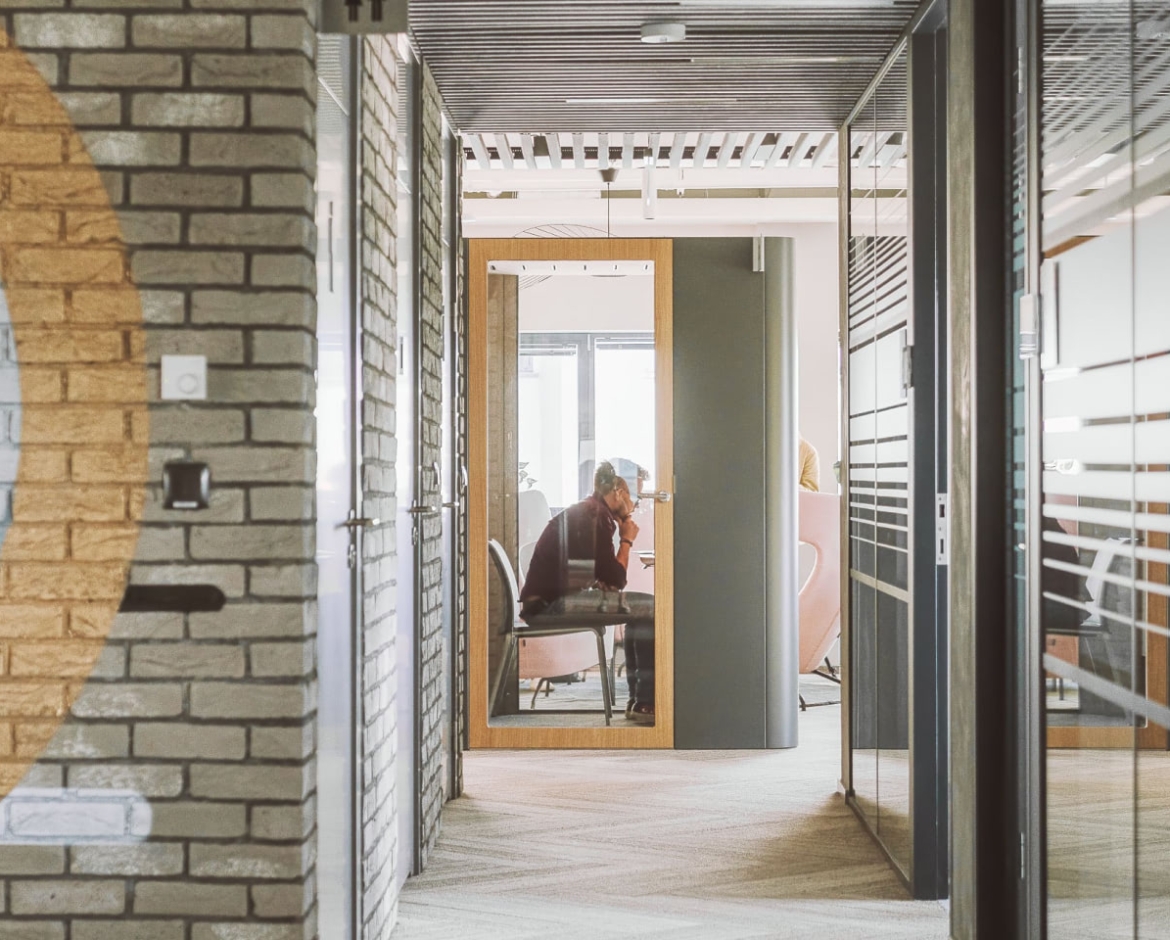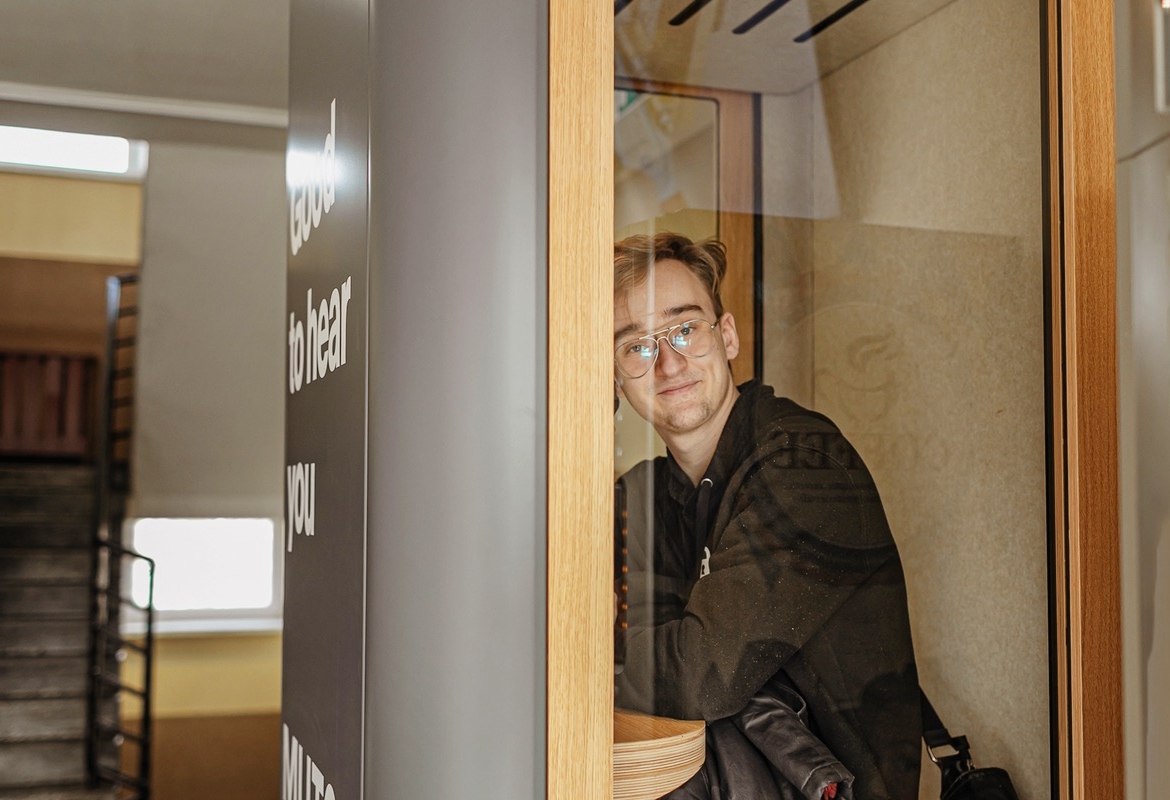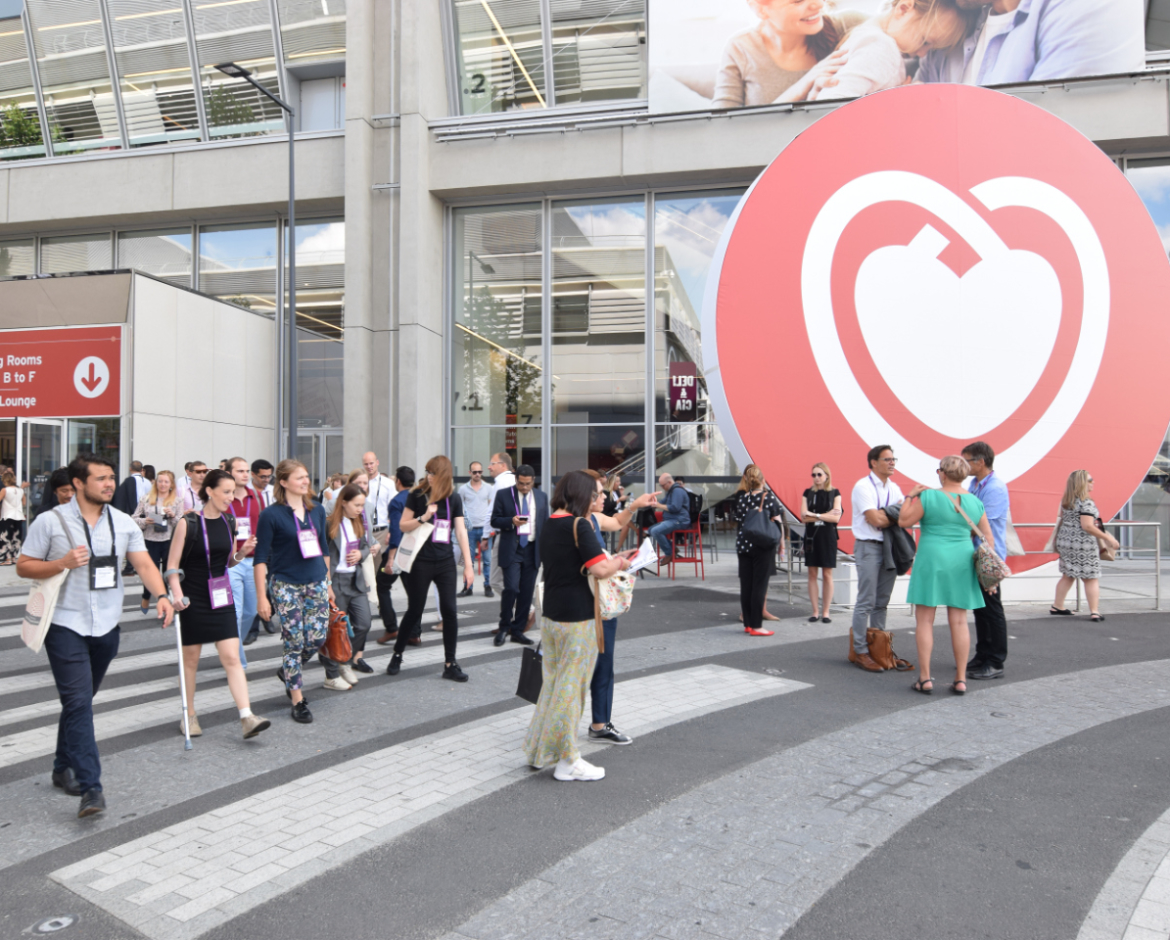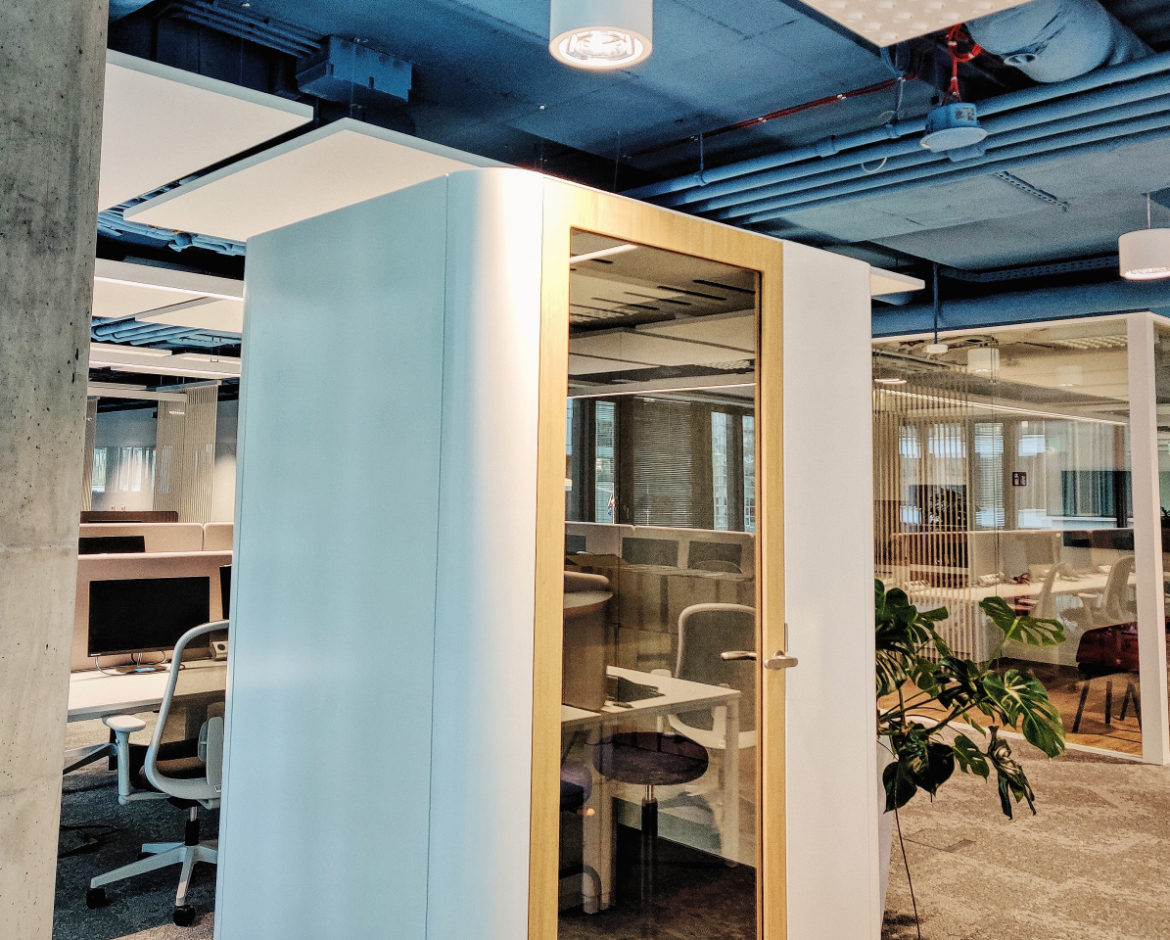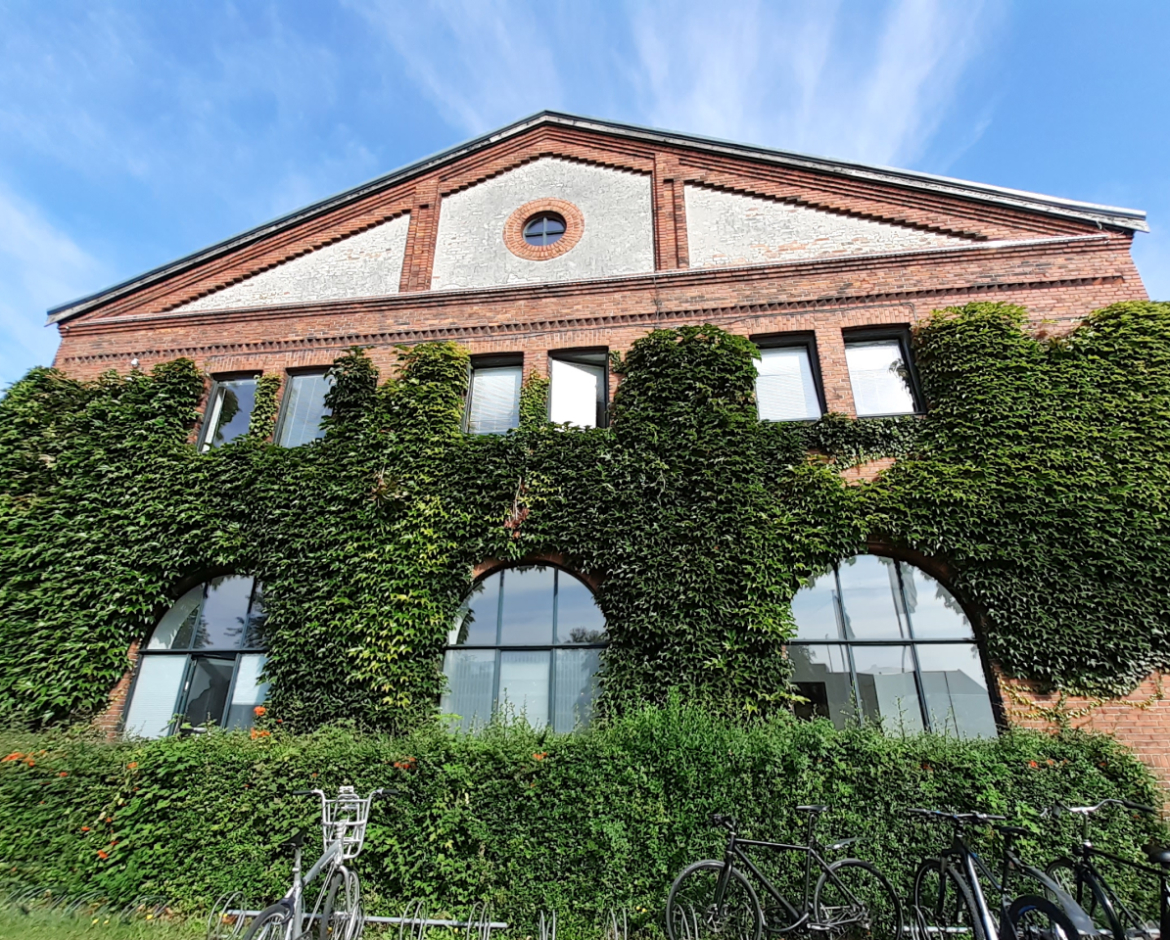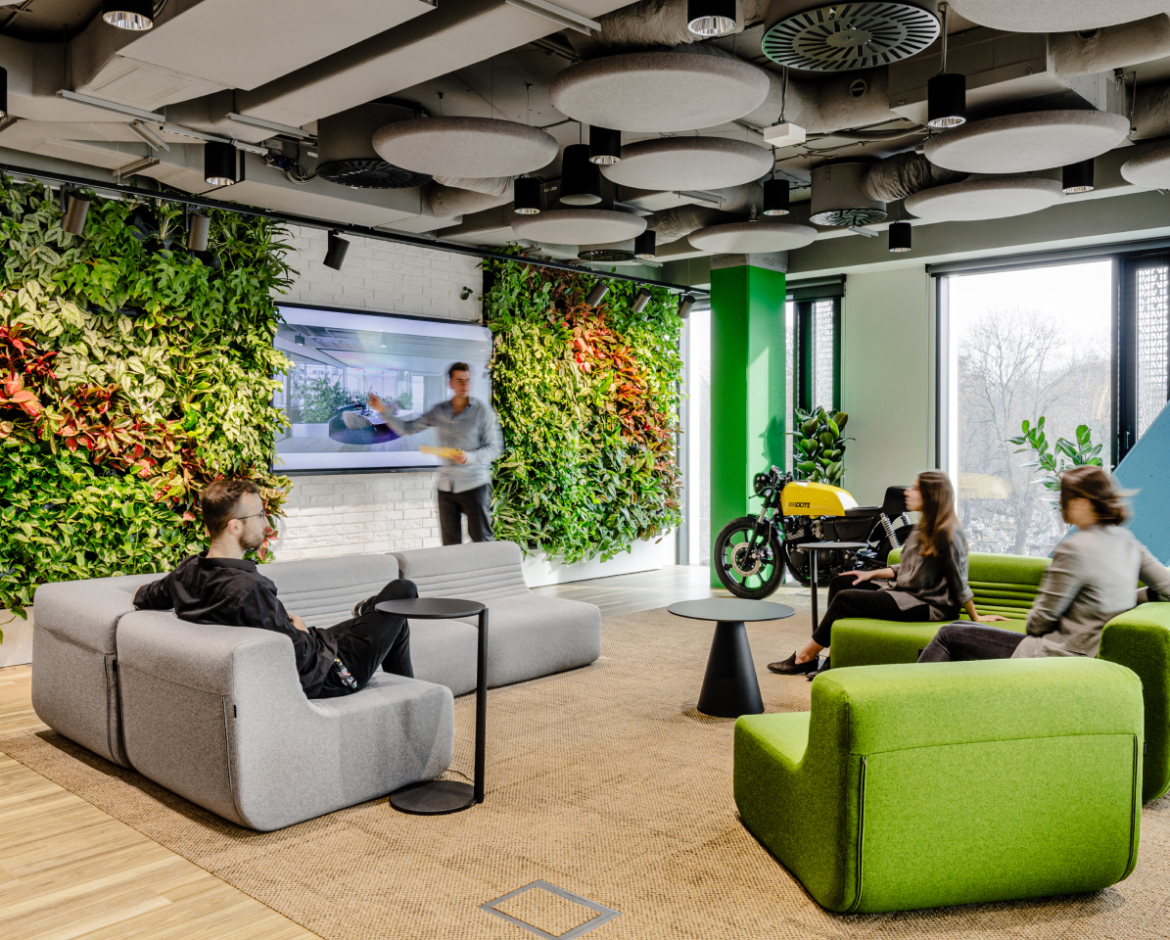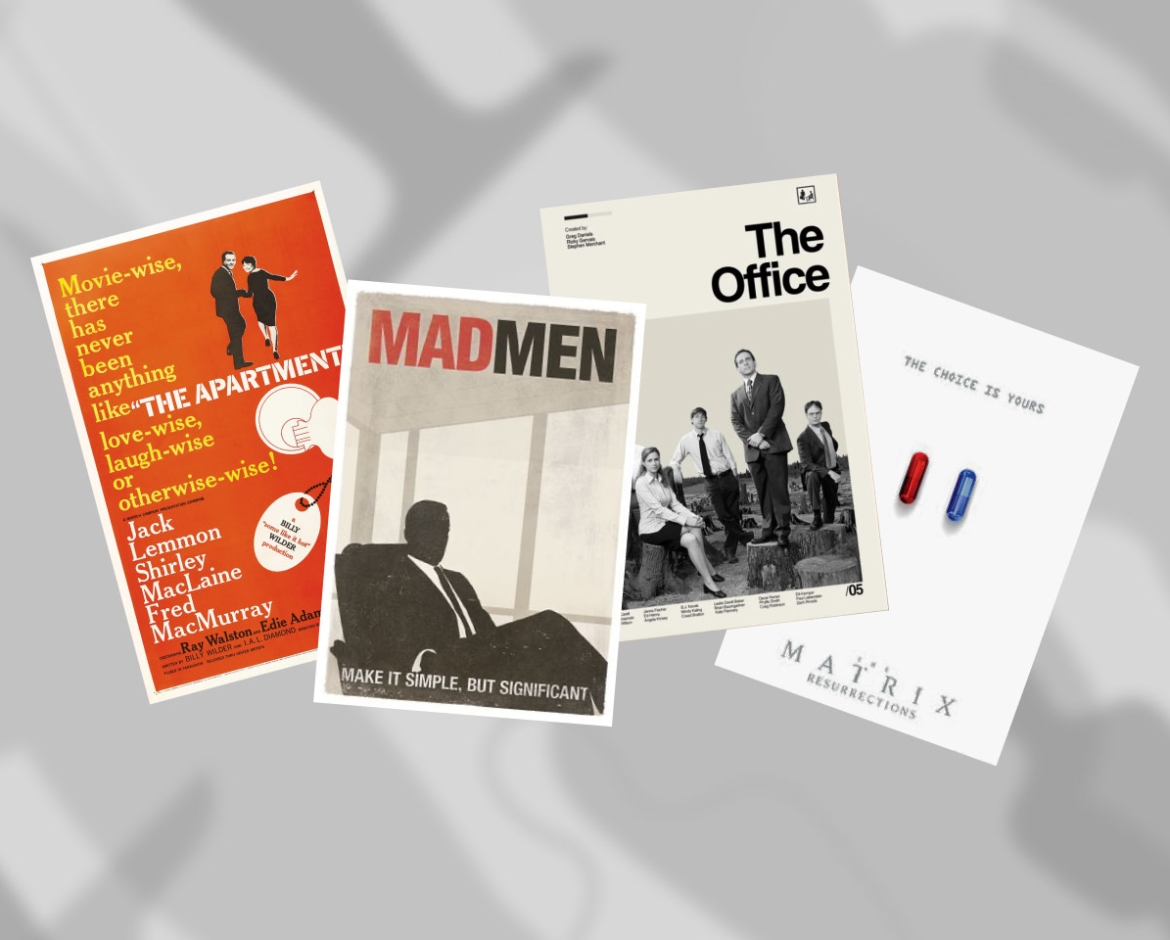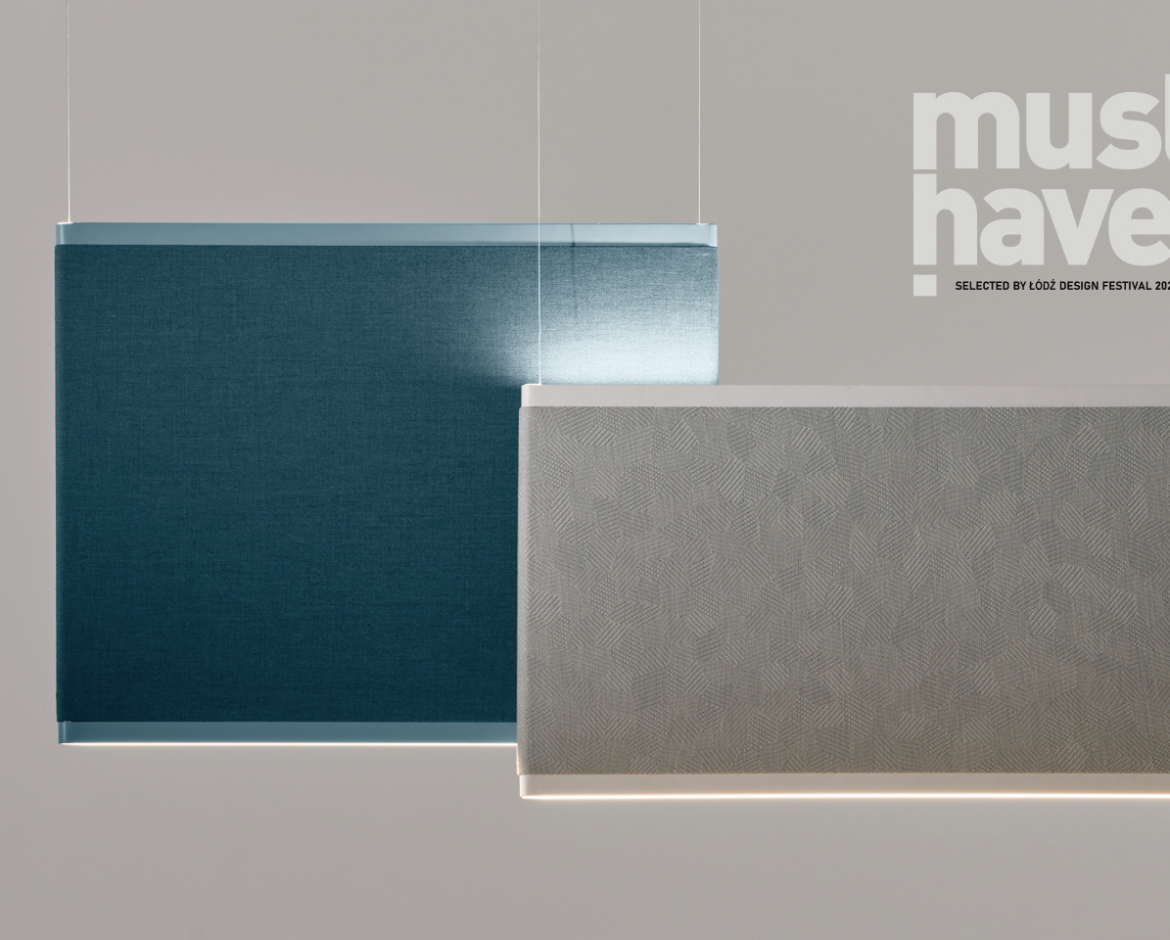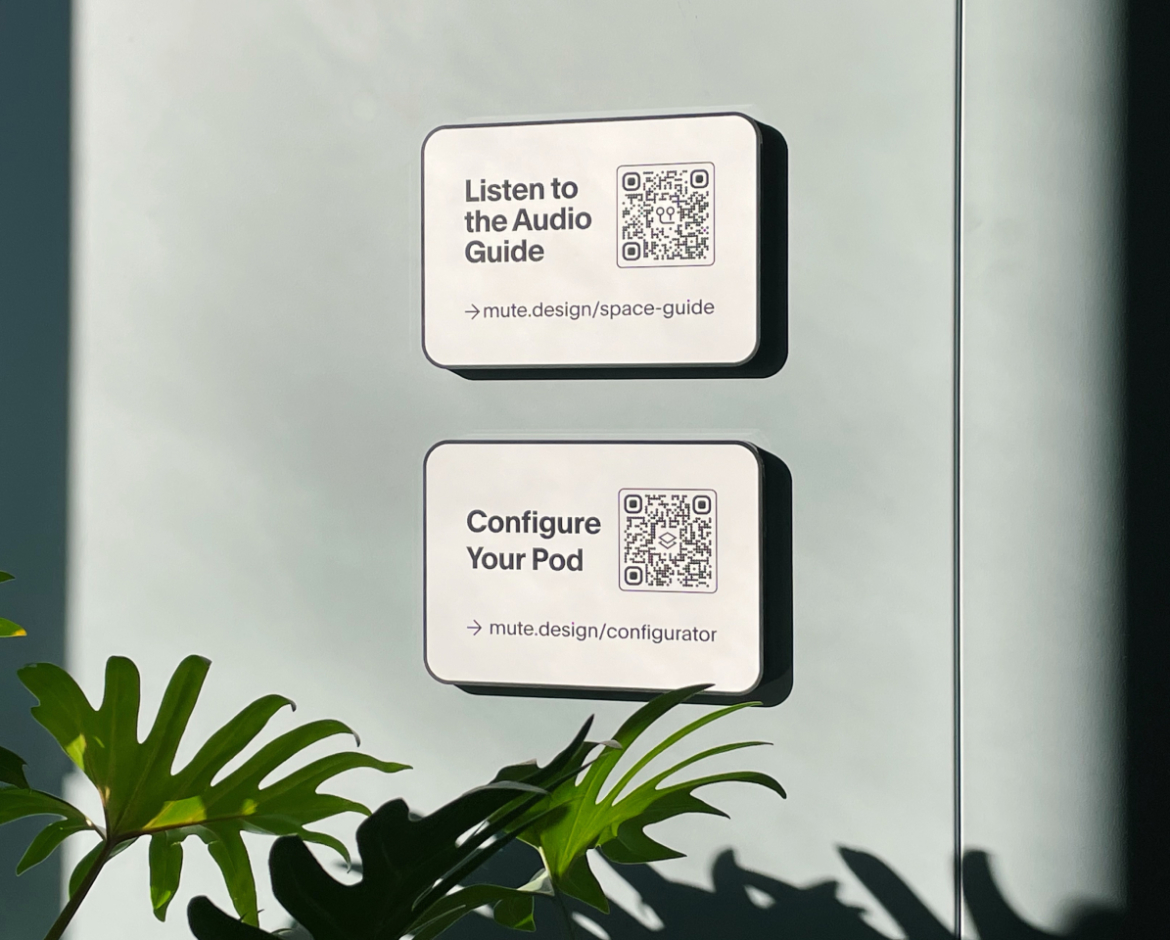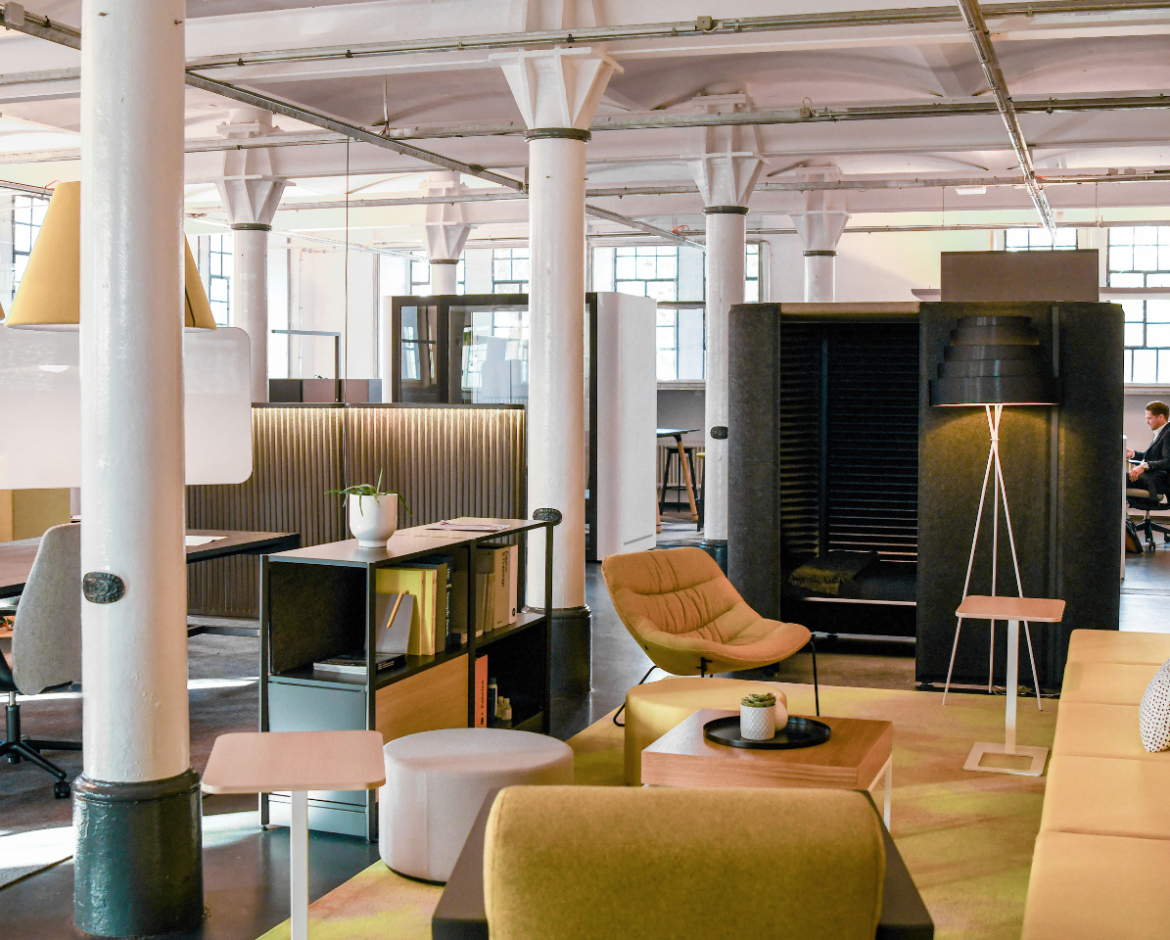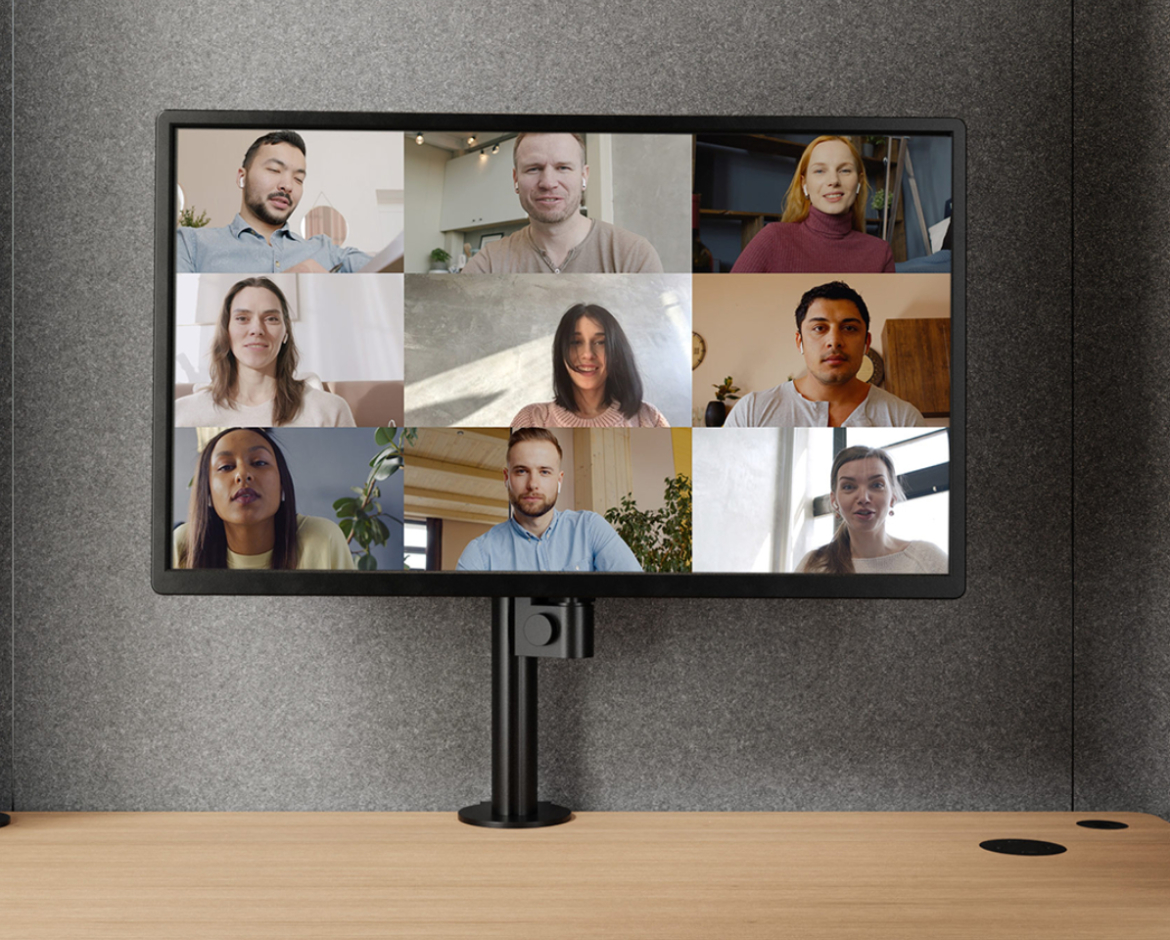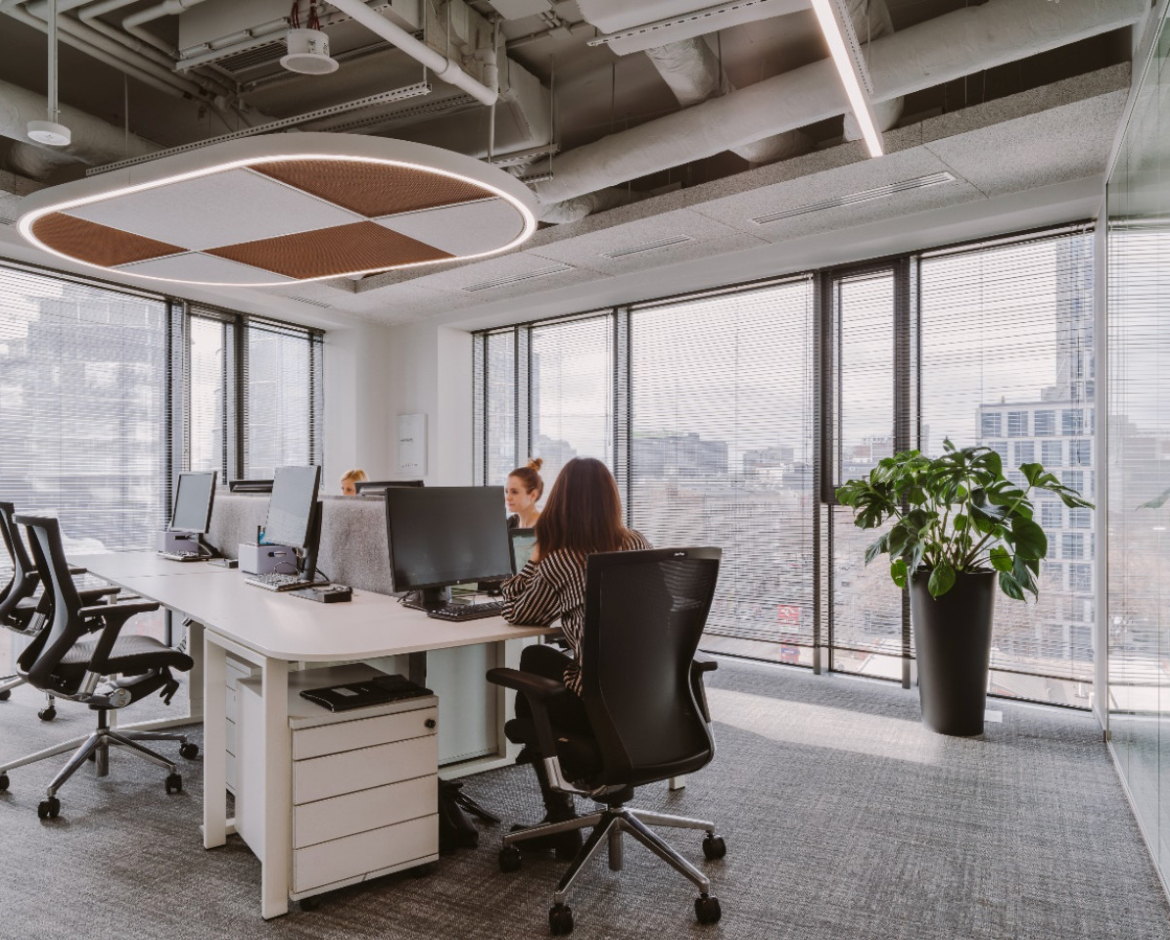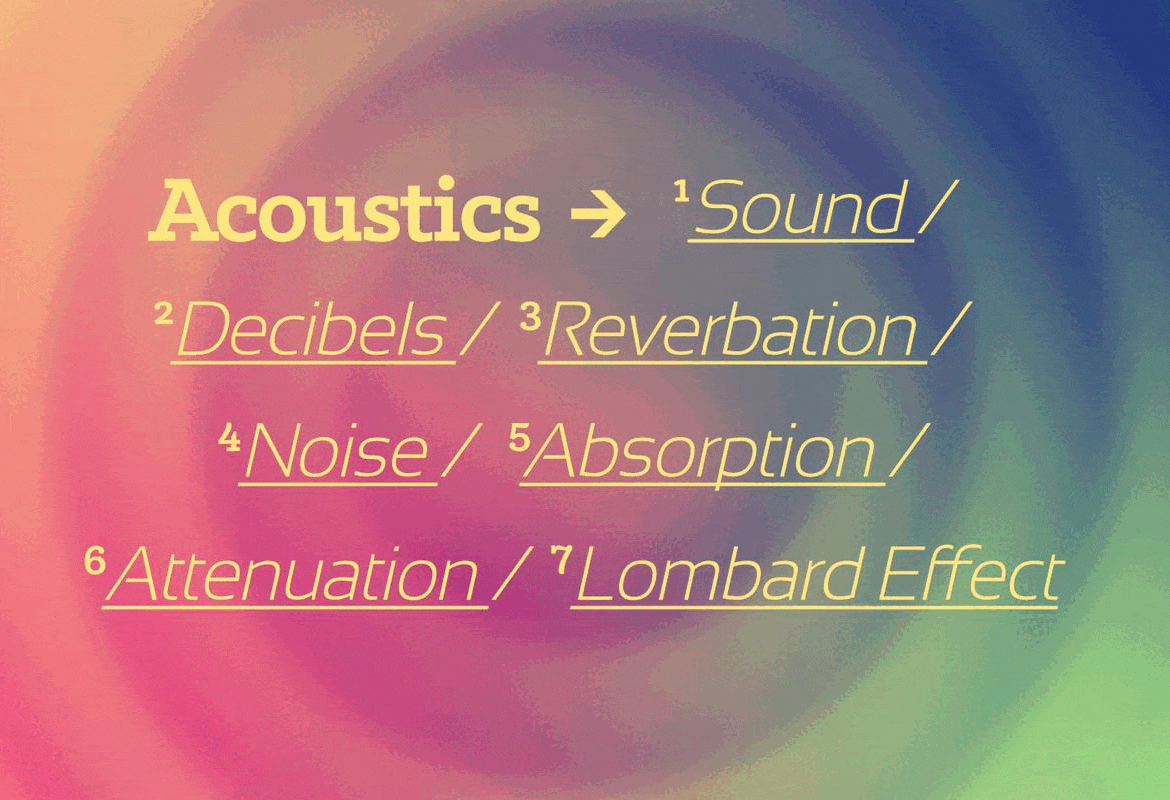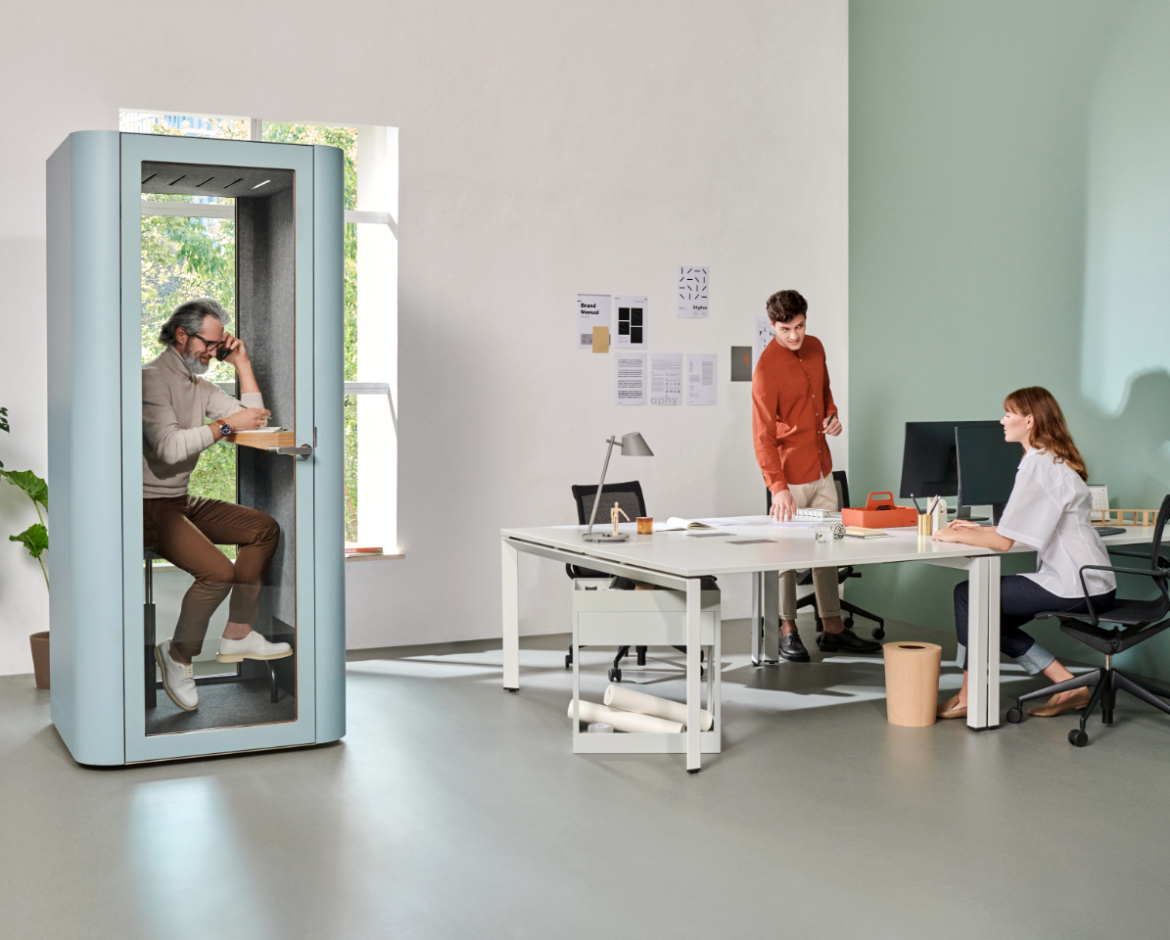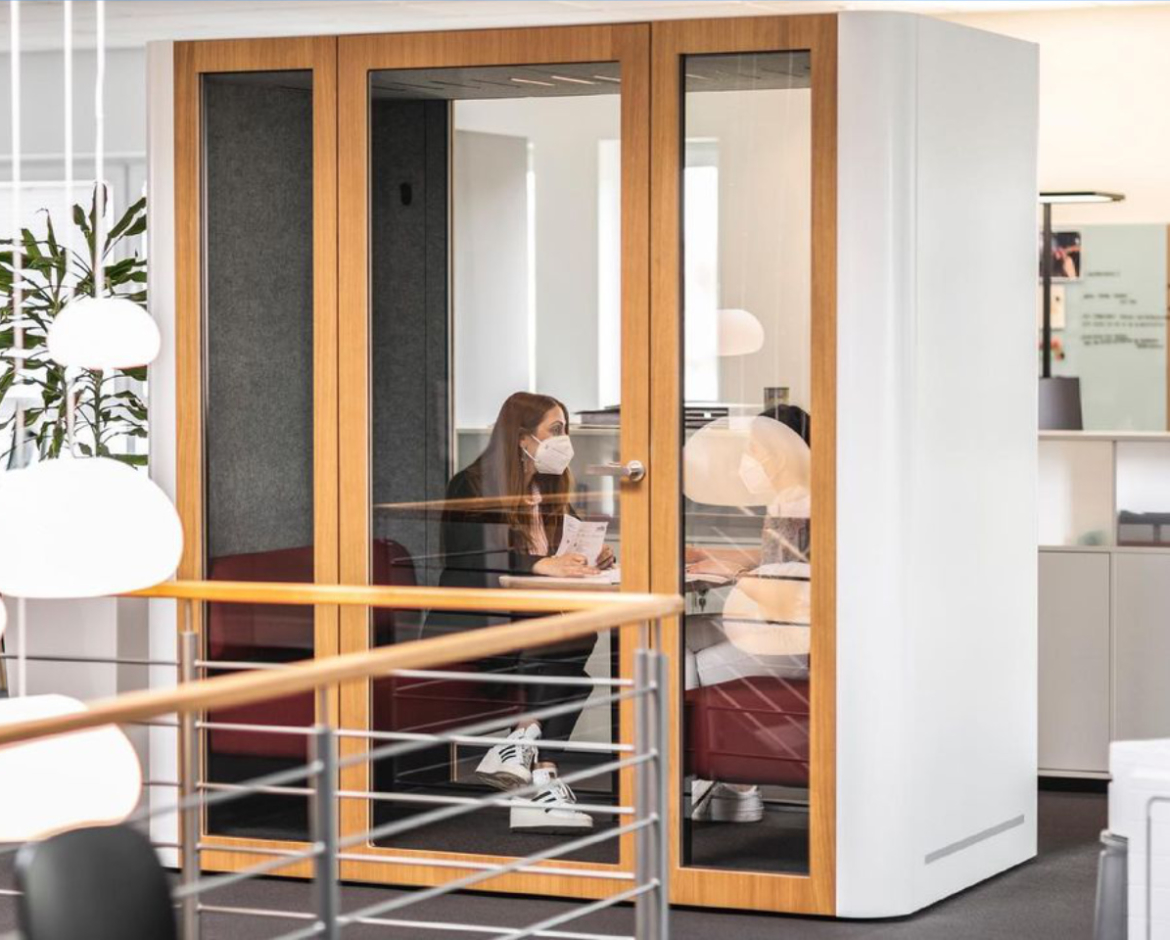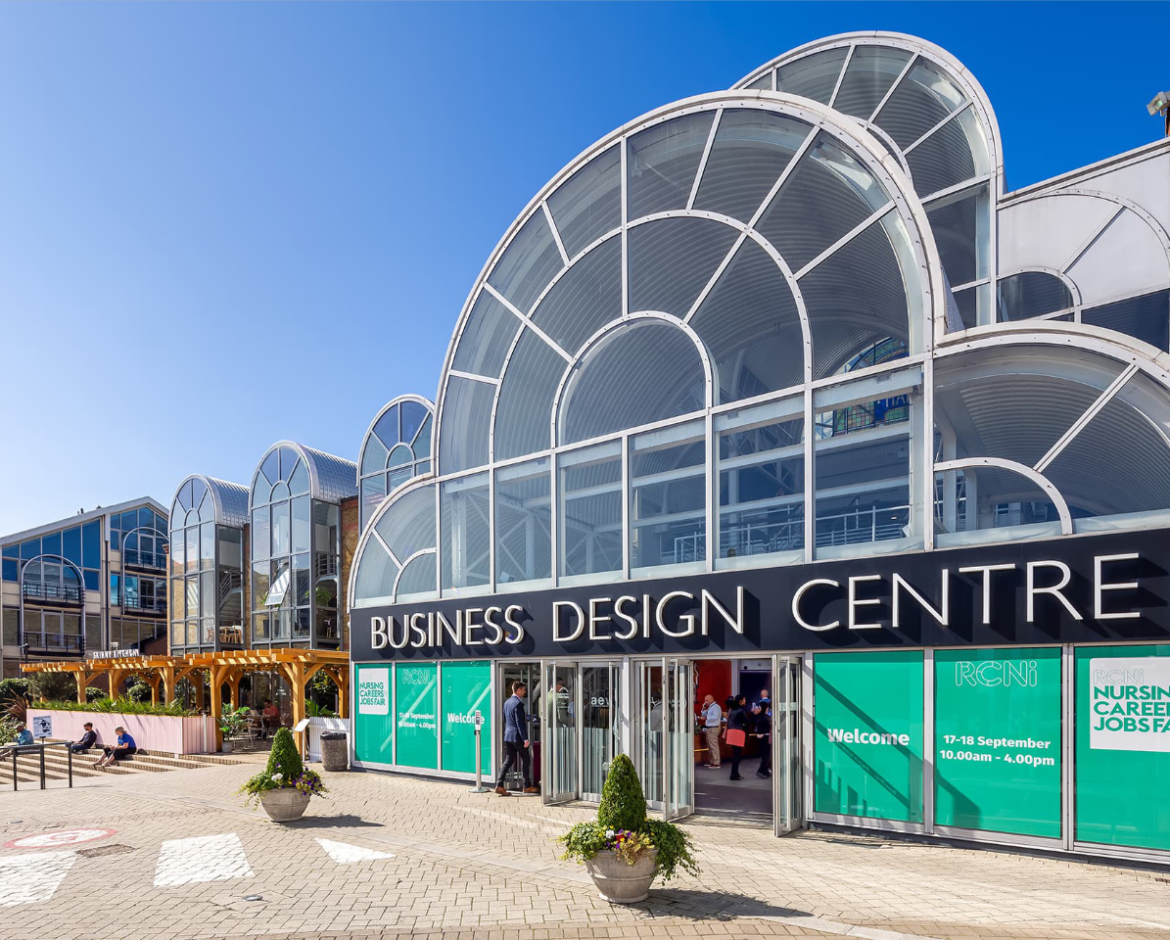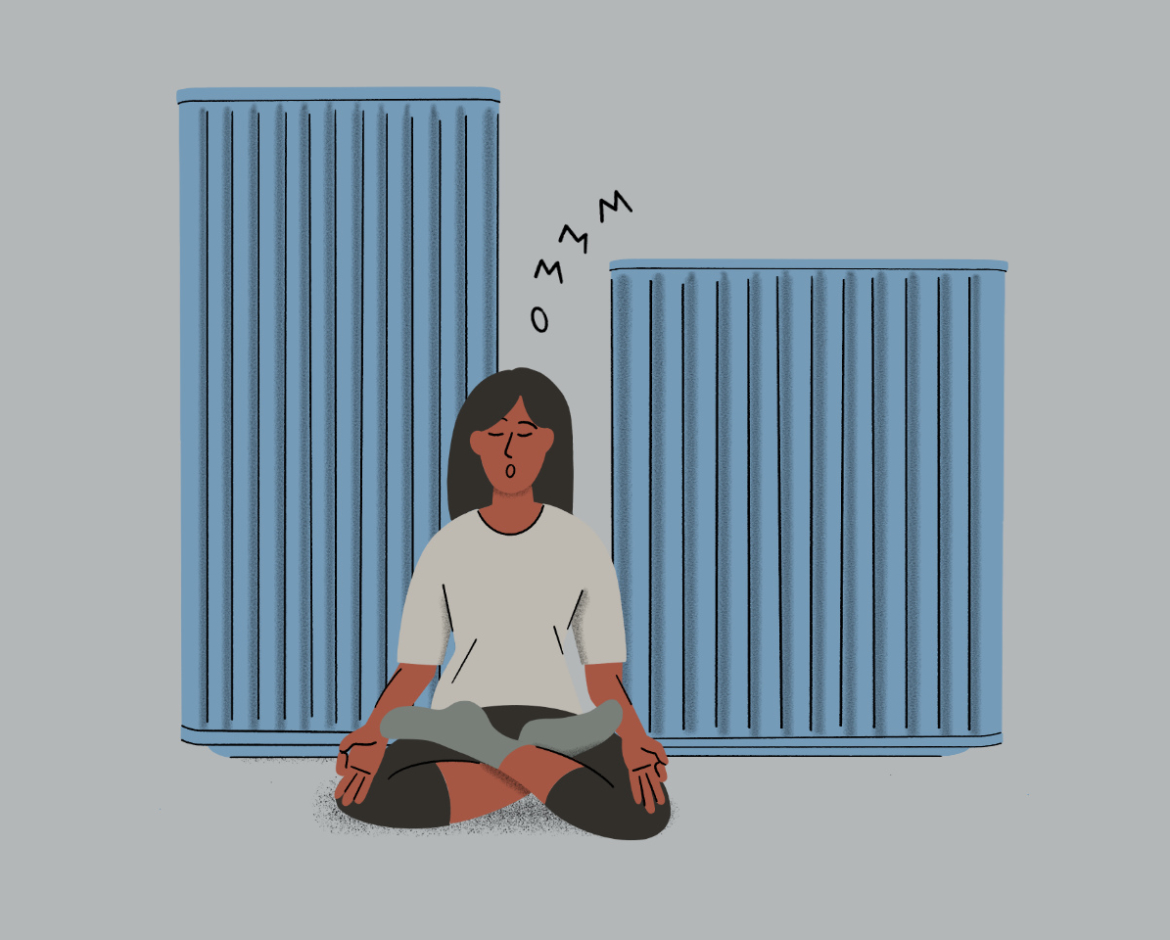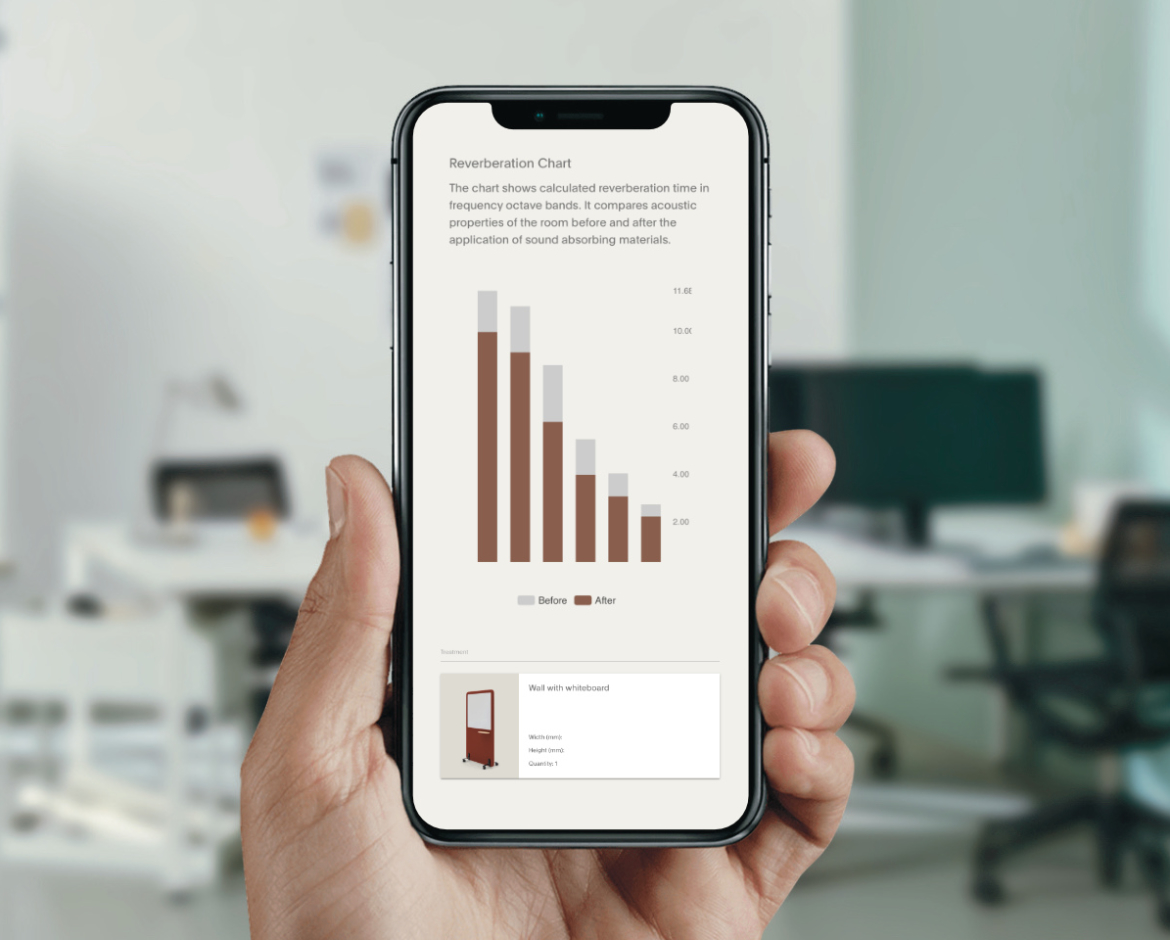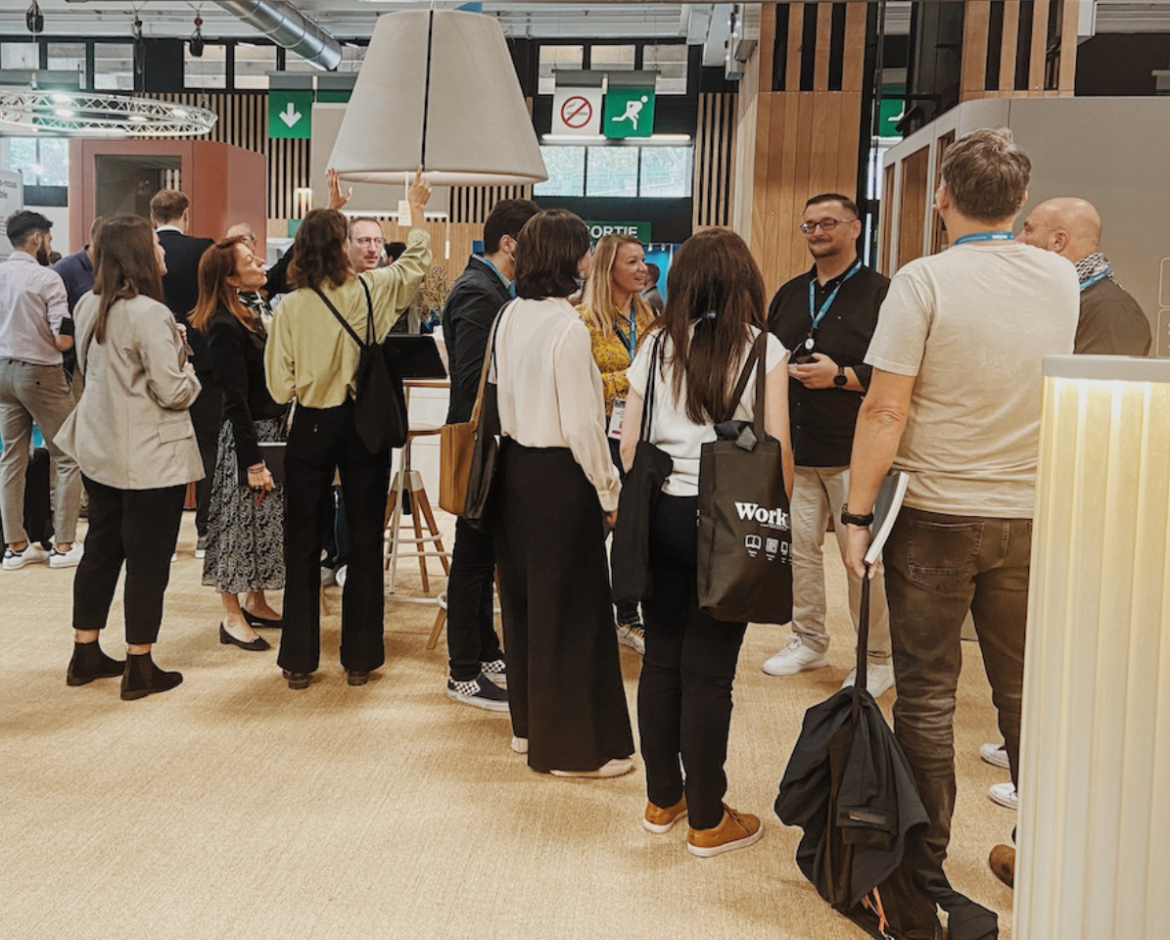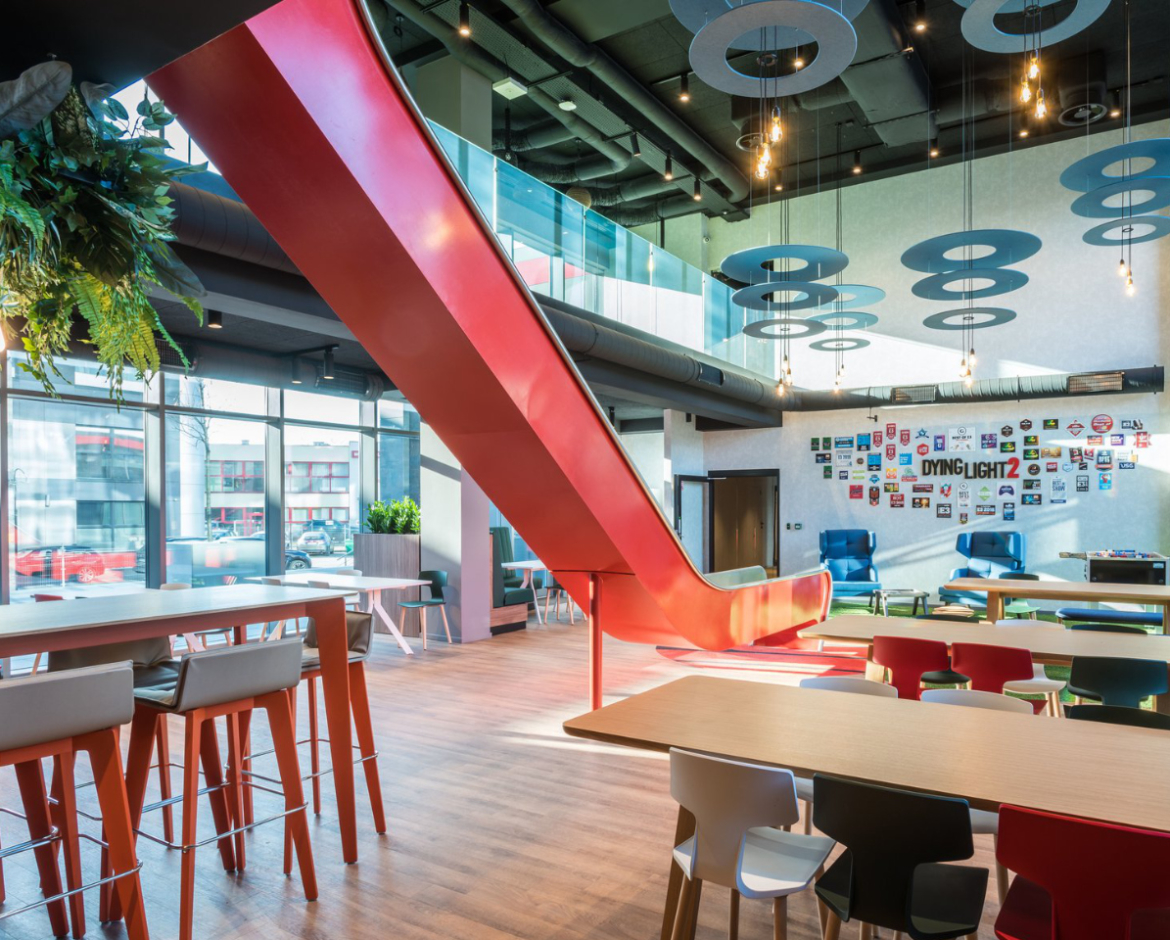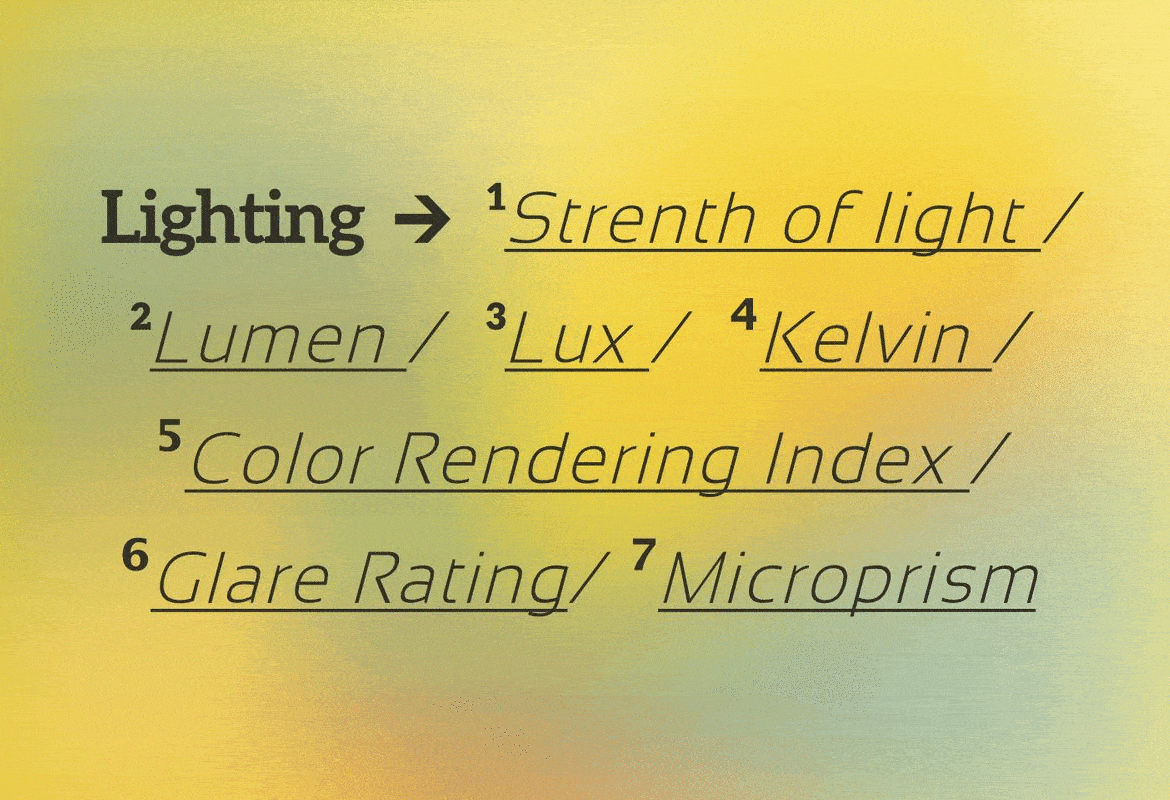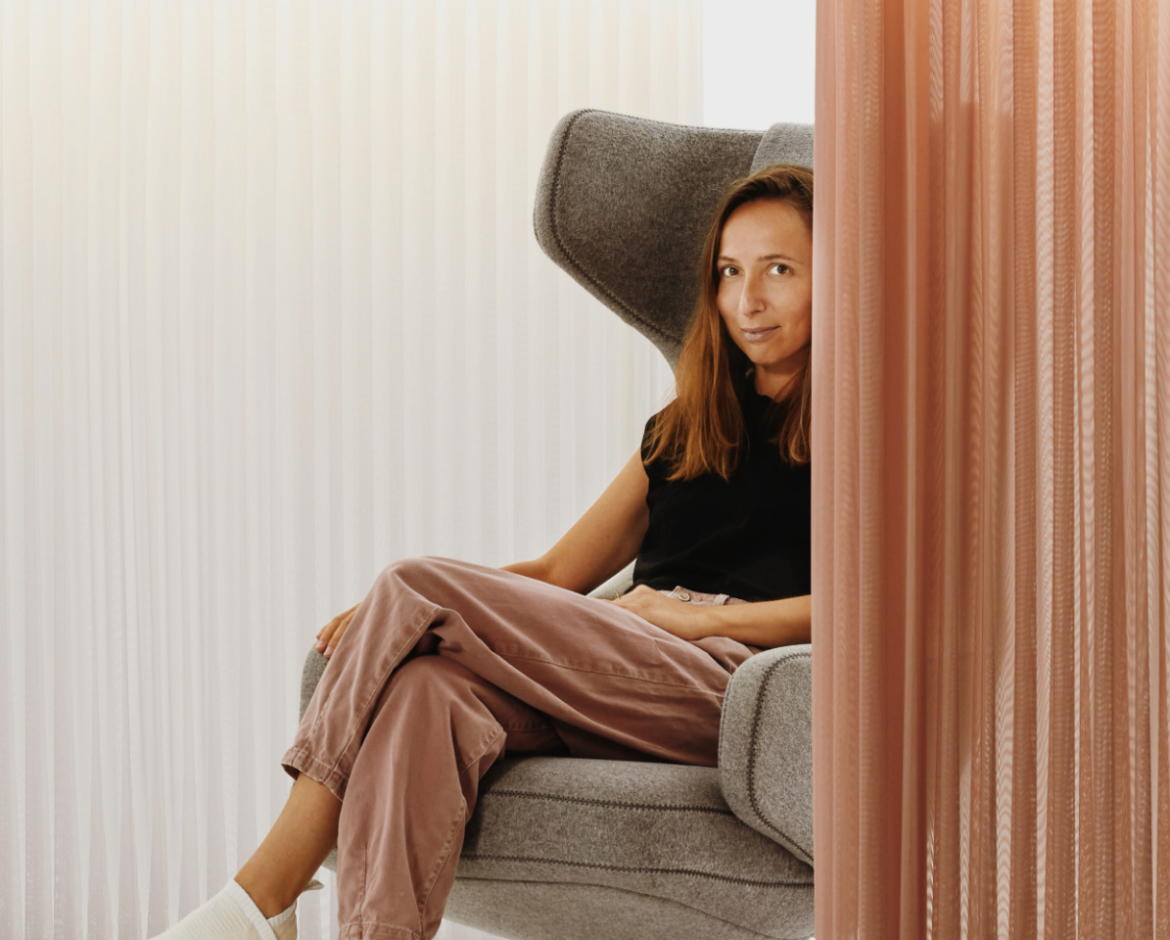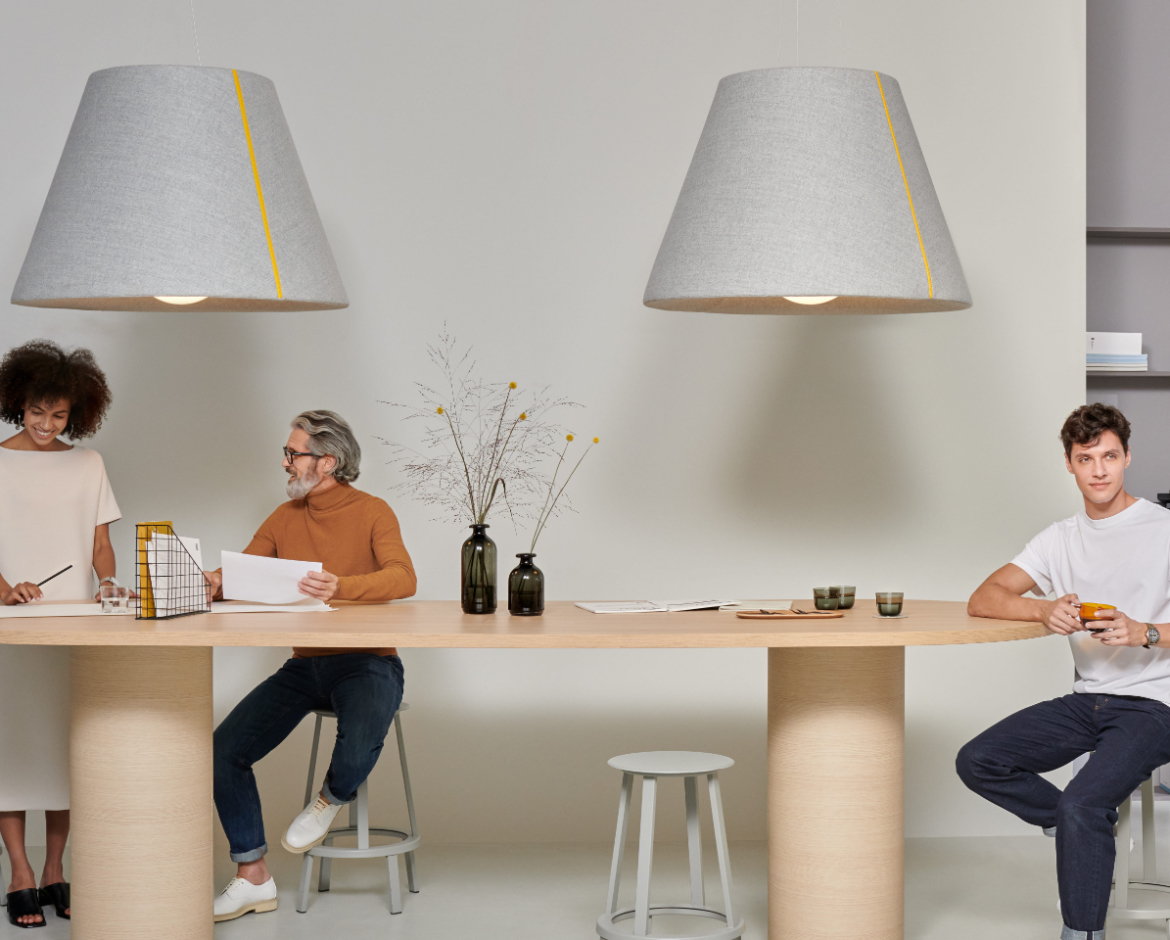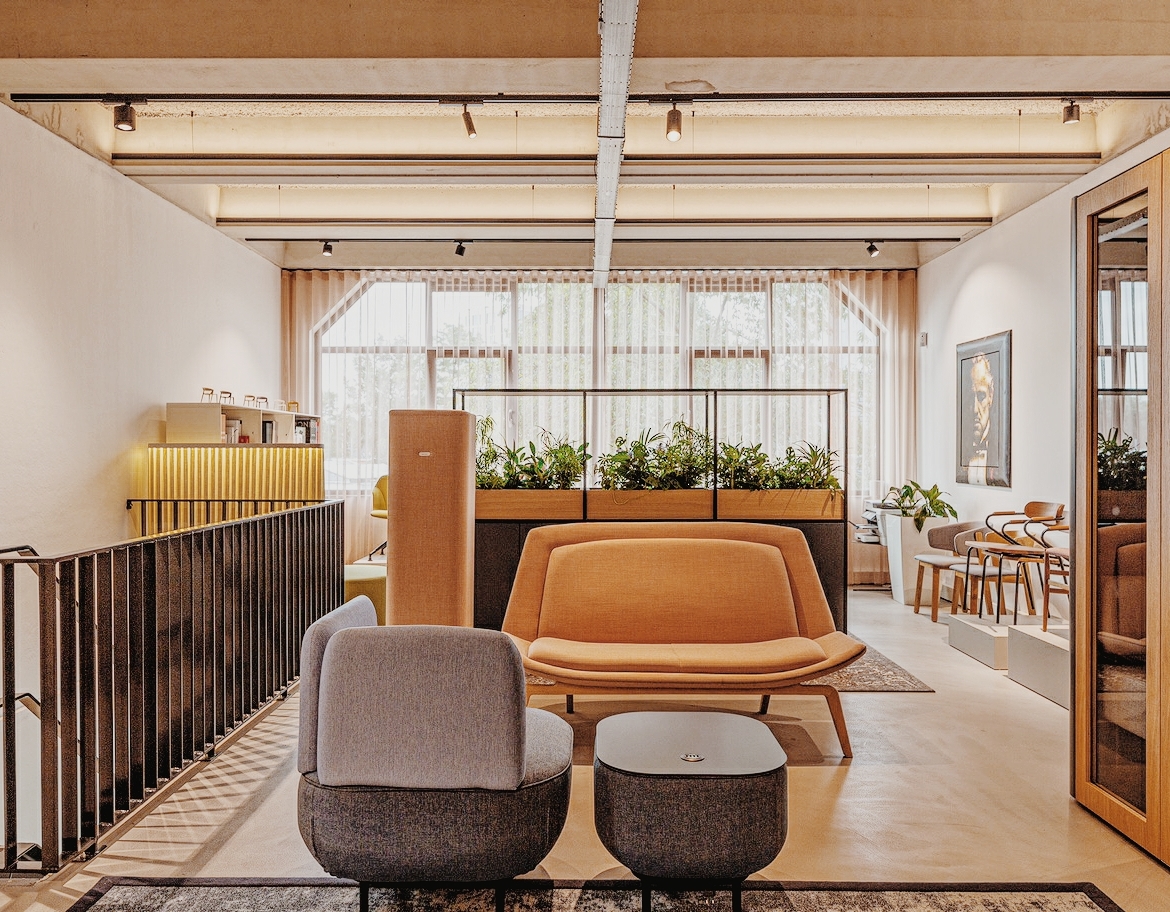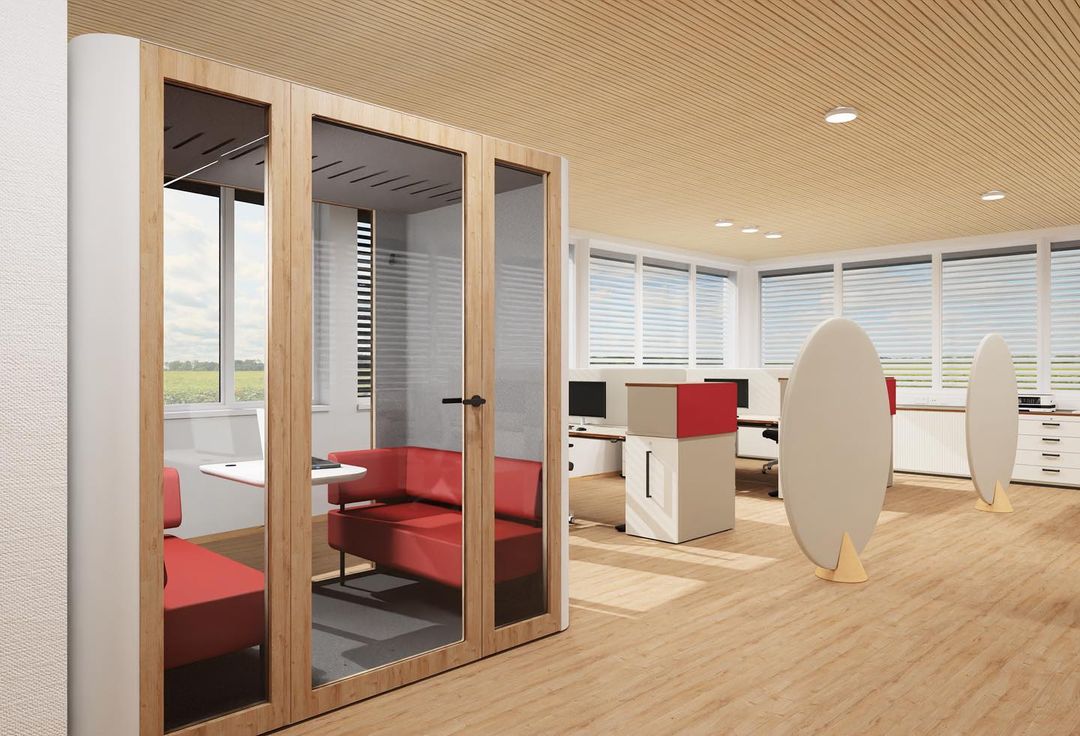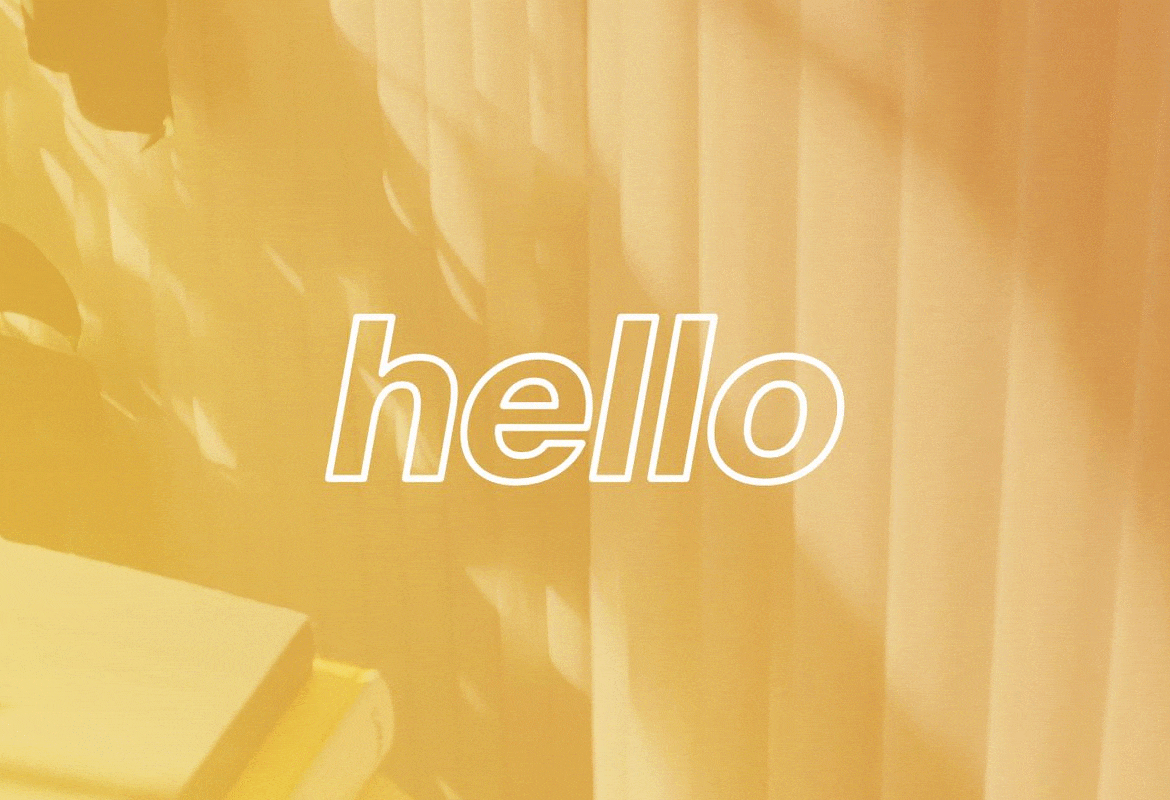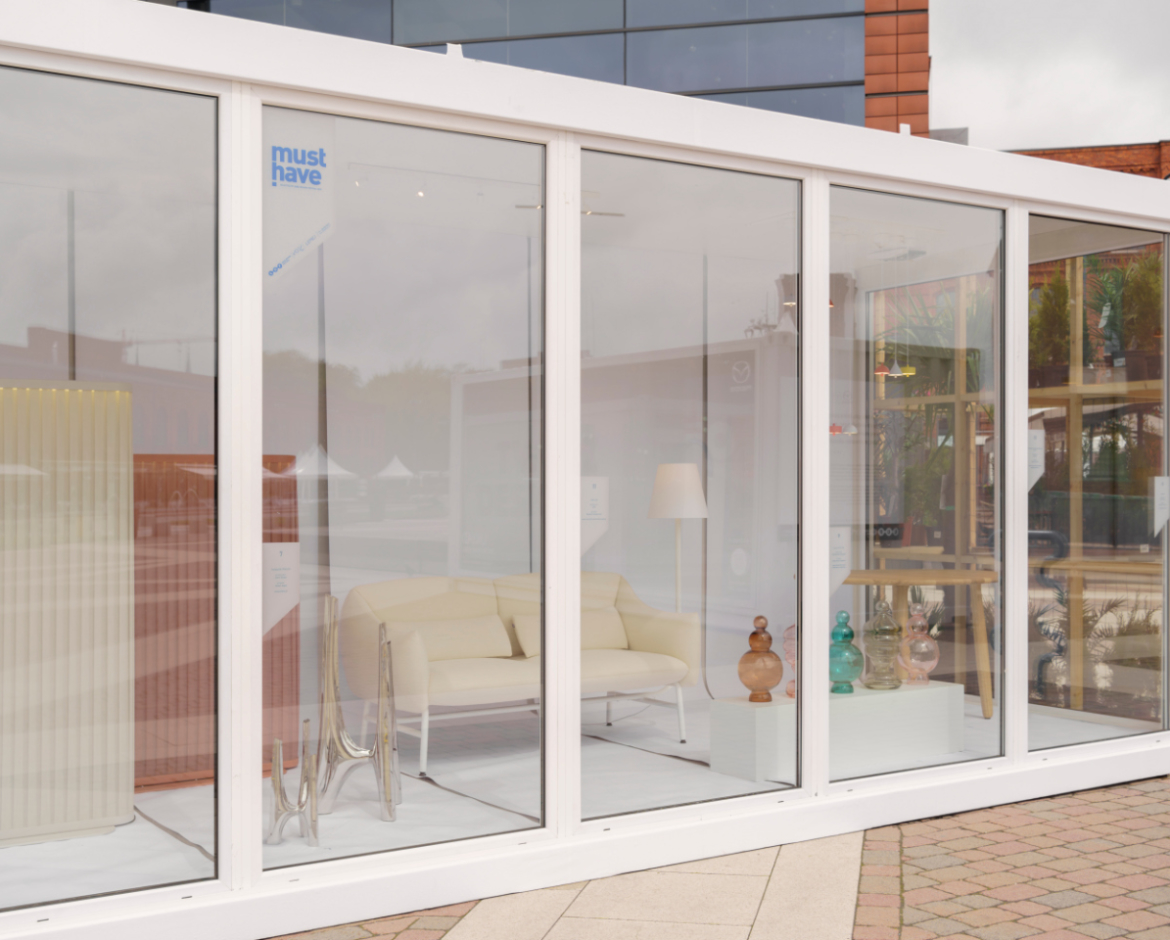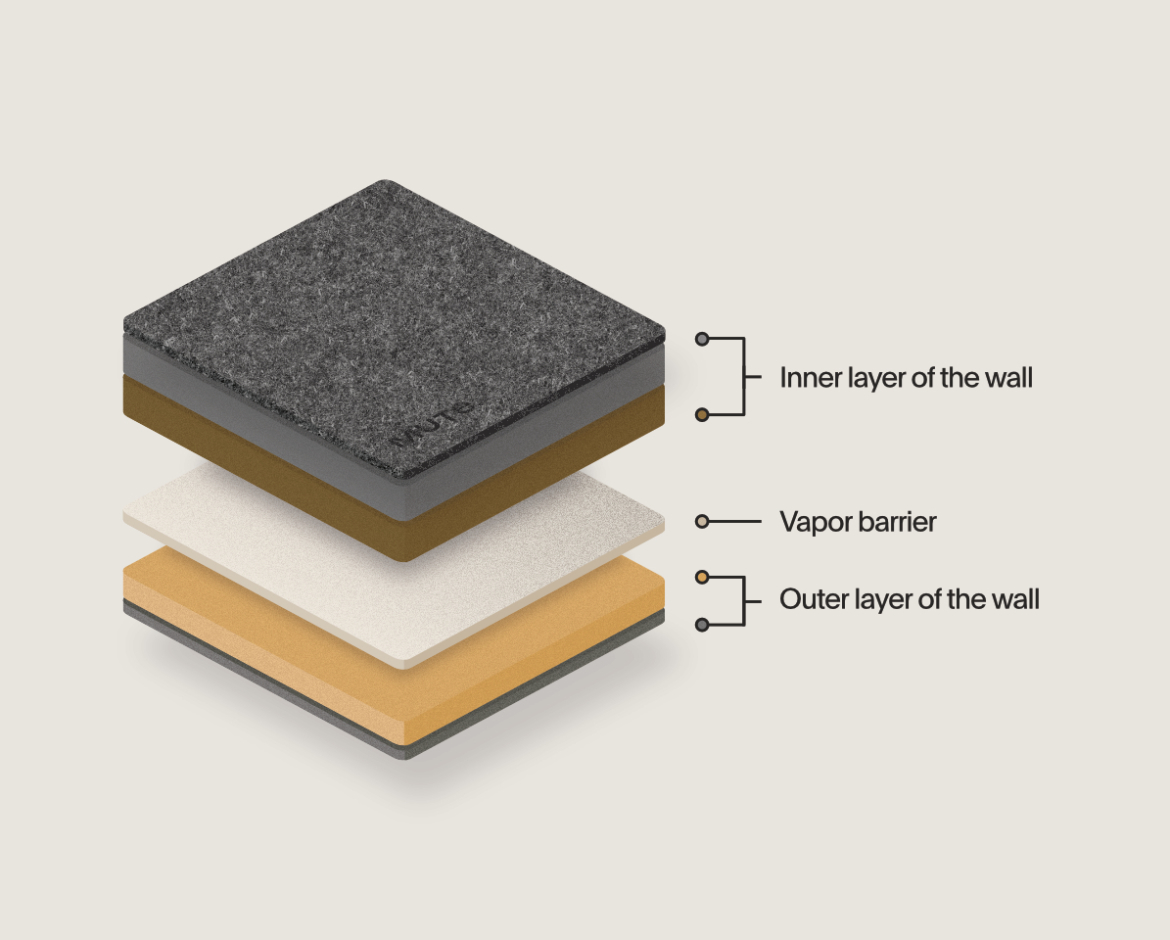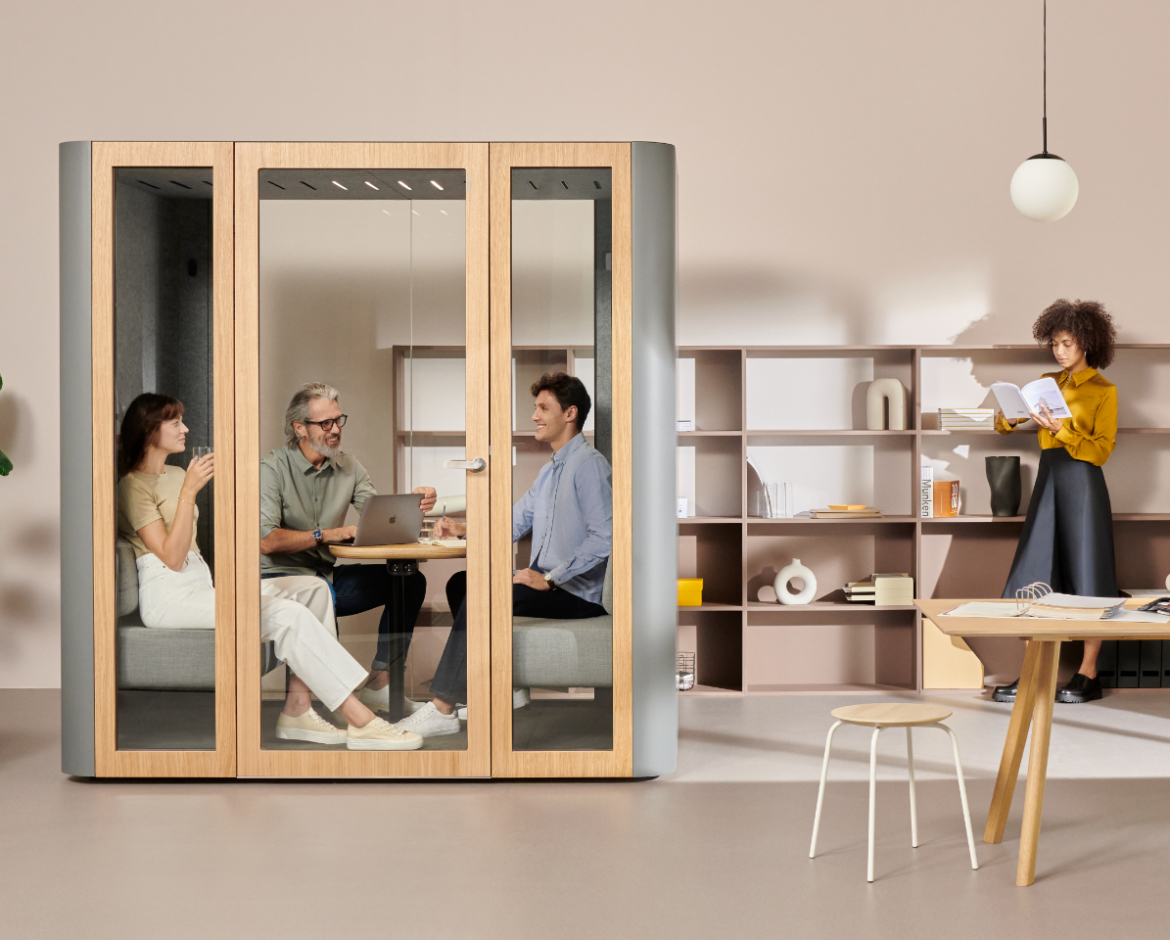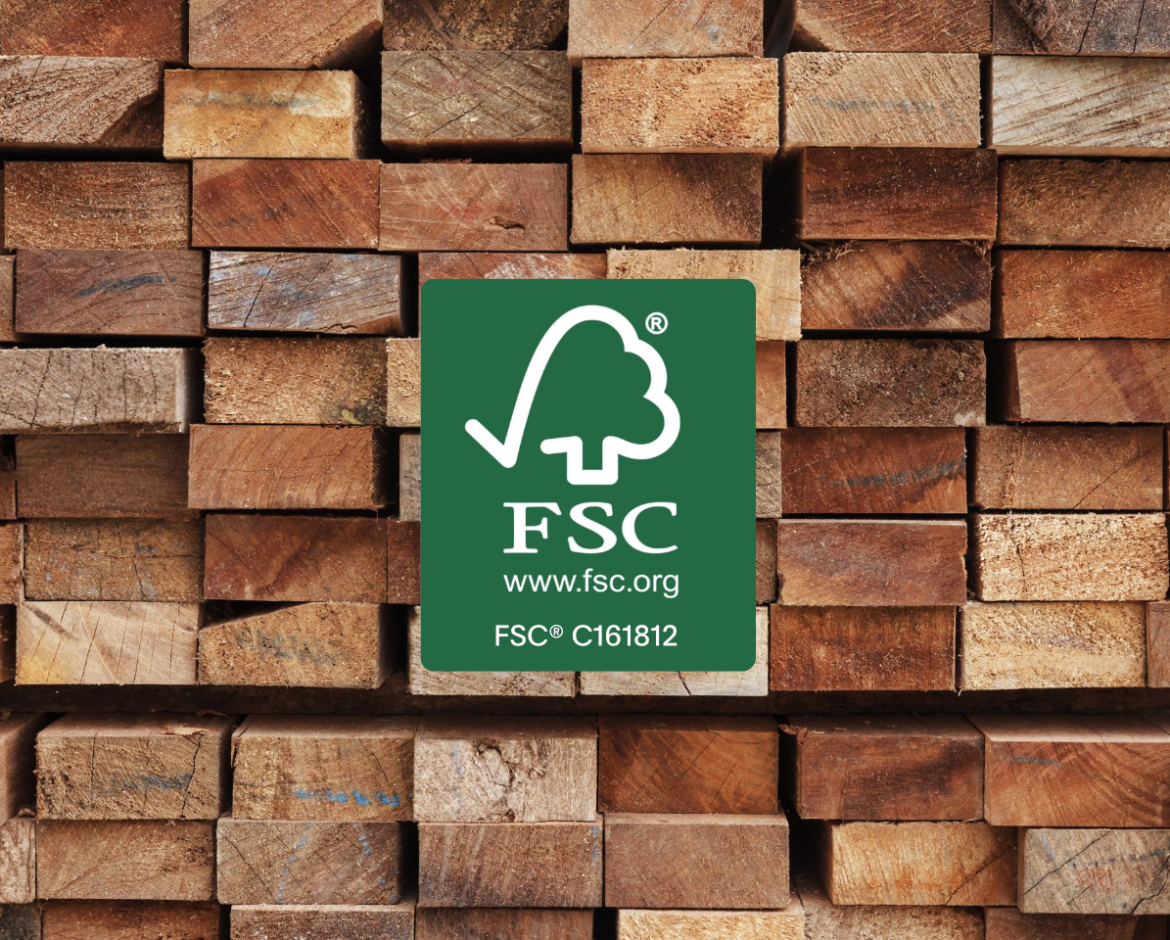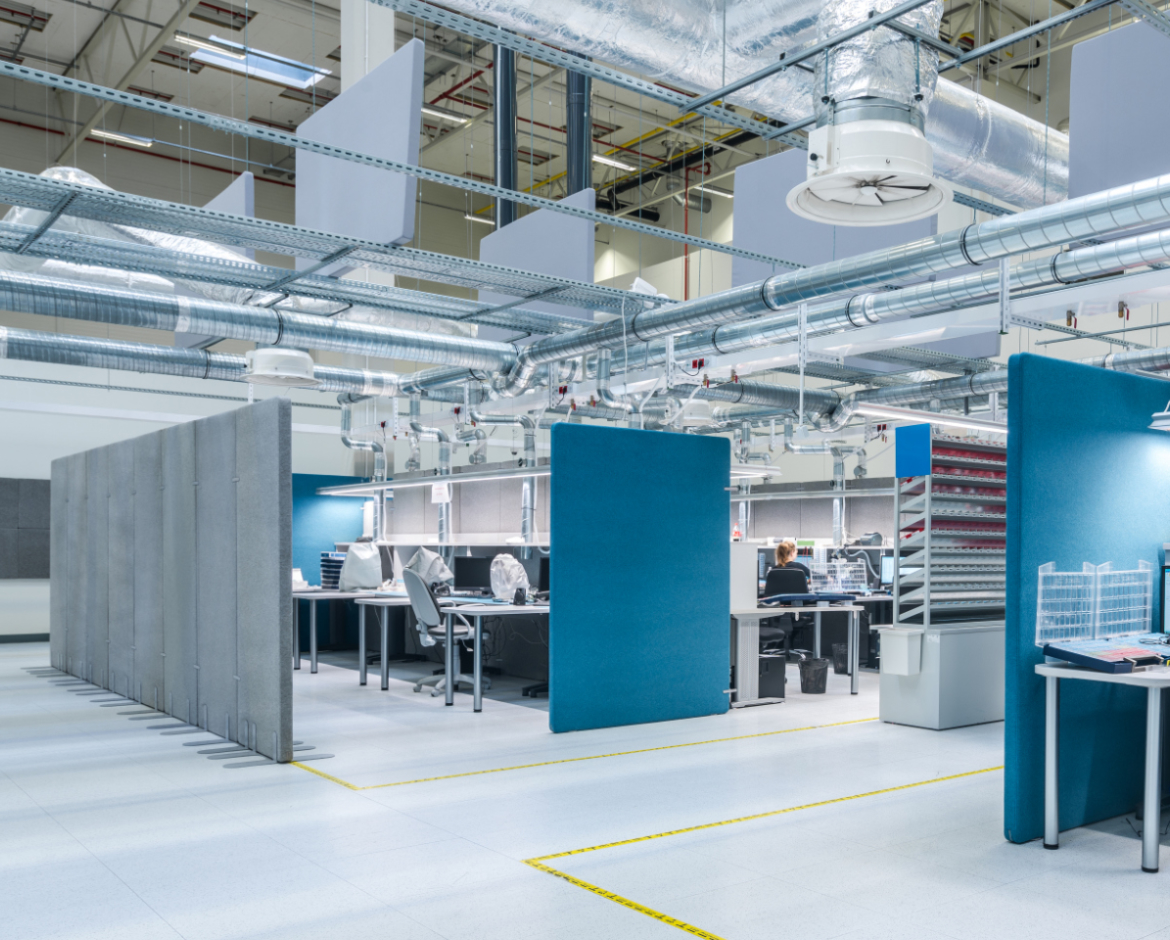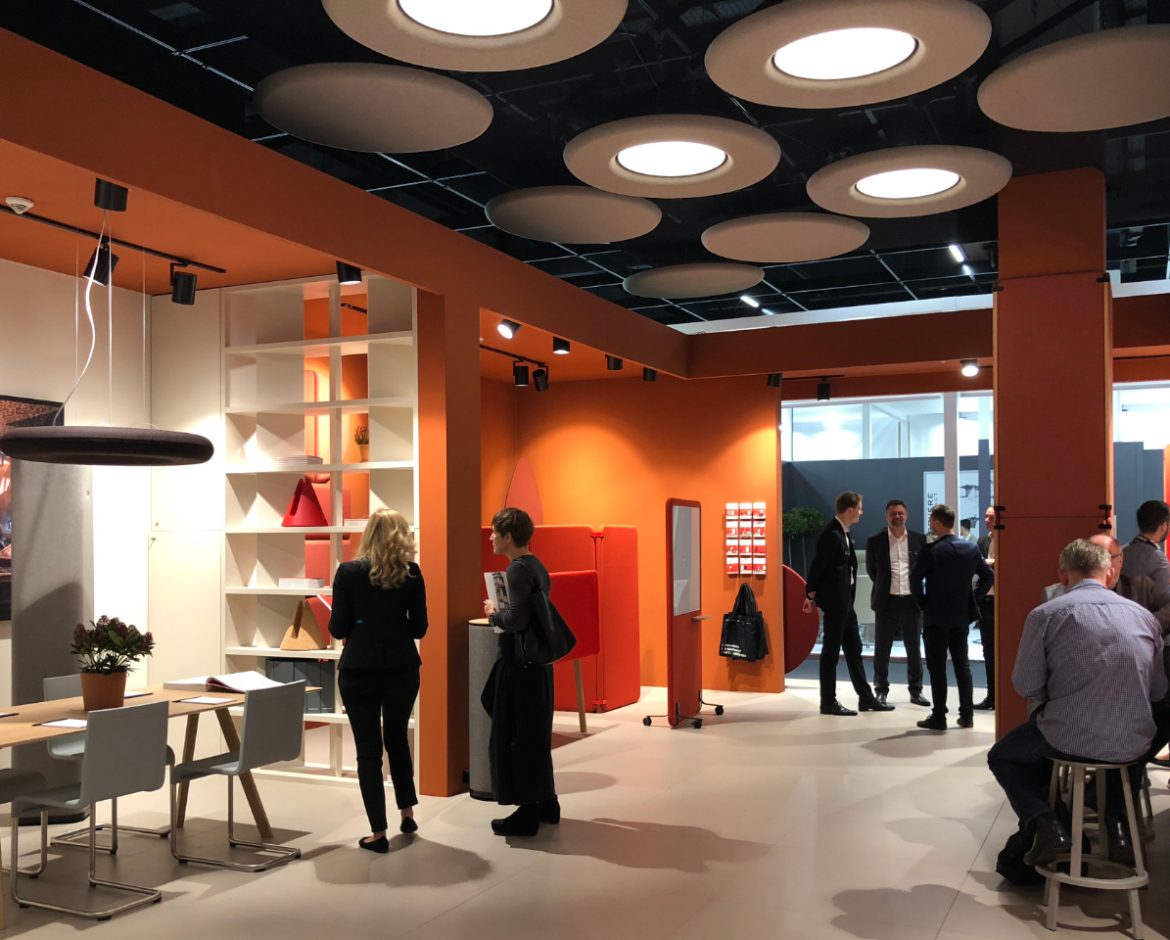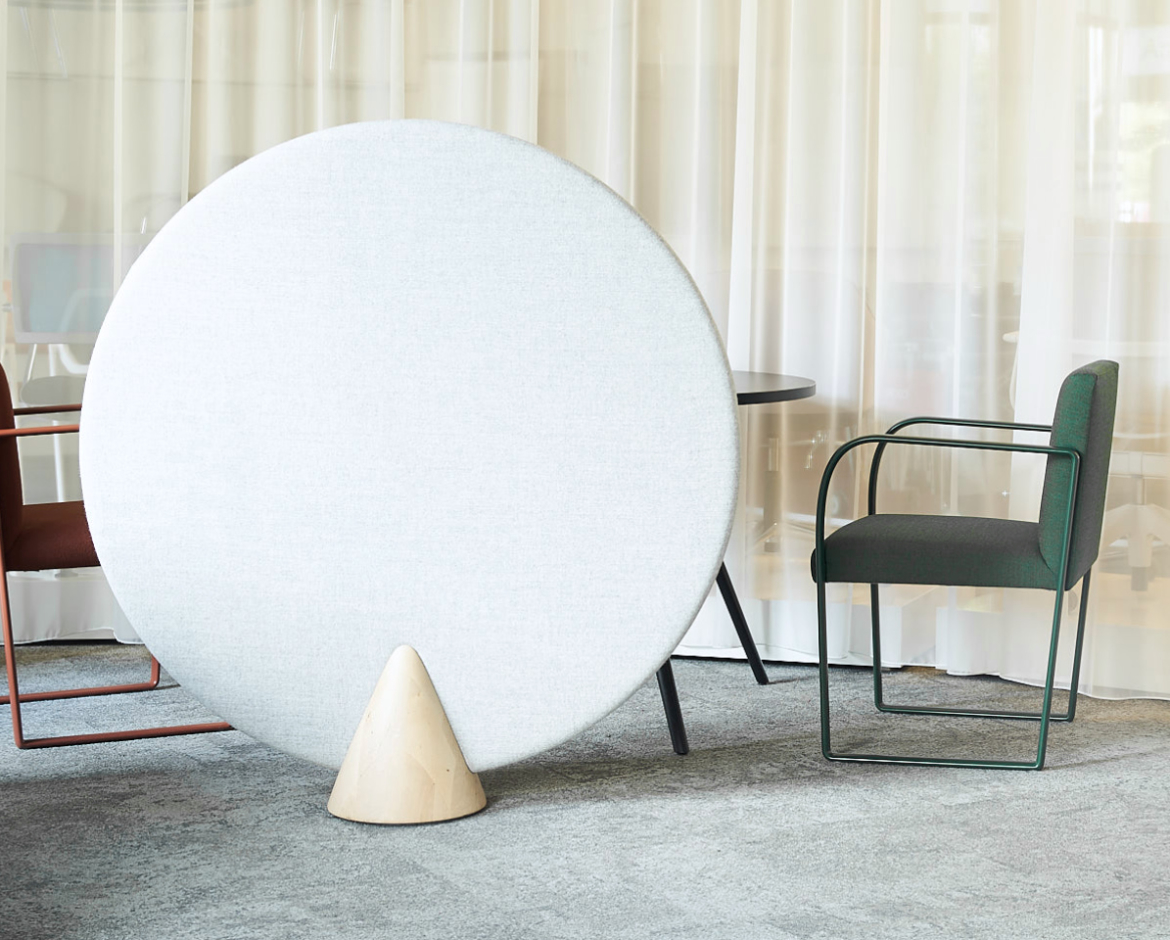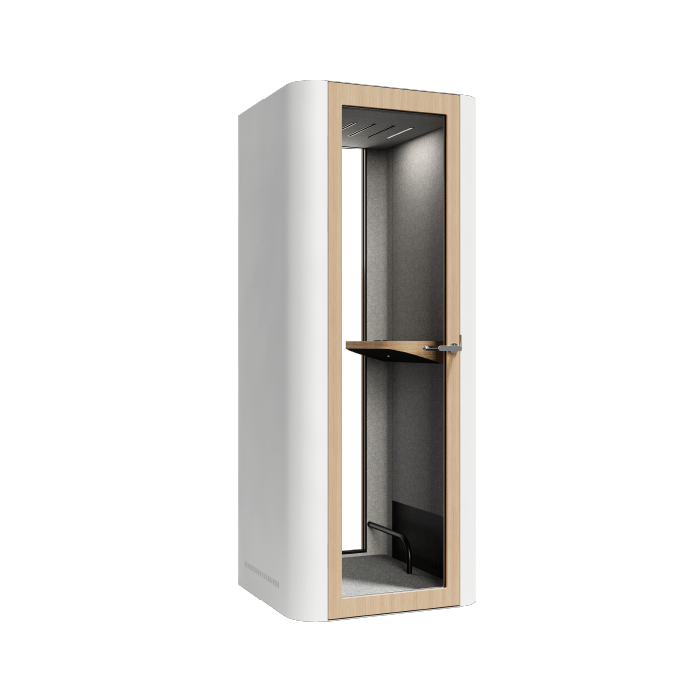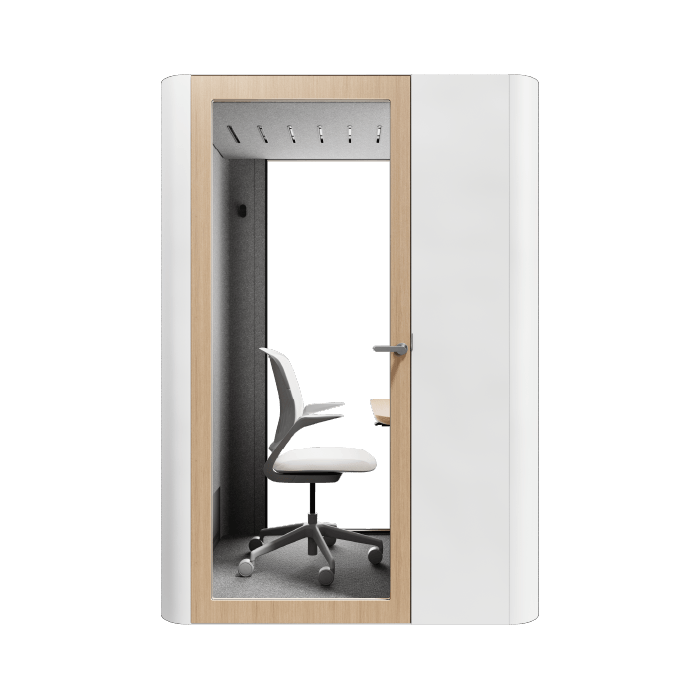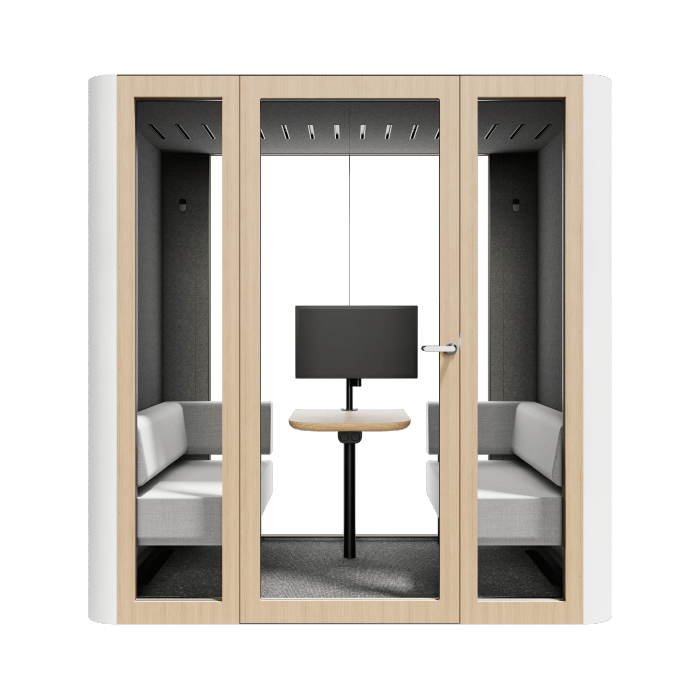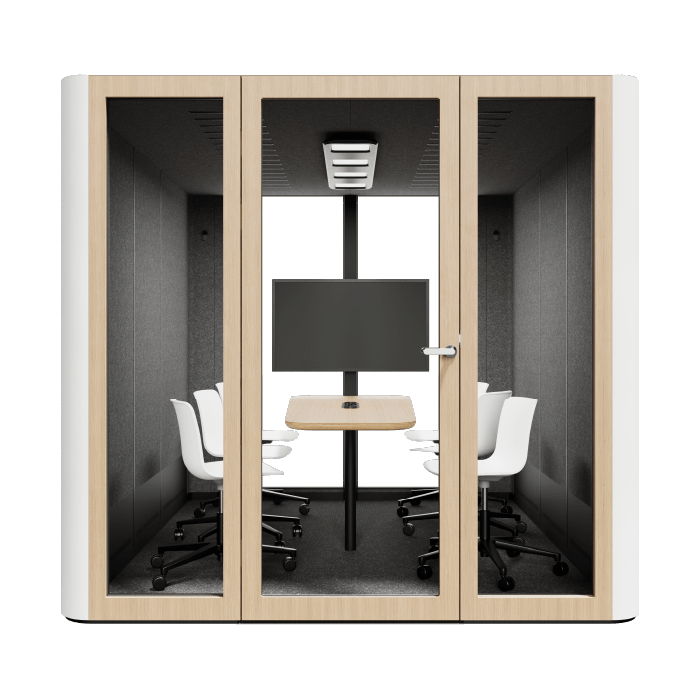The article below is part of “Mute’s Guide to Adaptable Office Architecture”, a comprehensive publication that will explore the origins, examples, and principles of the Adaptable Office Architecture trend.
The modern workplace has undergone a profound transformation in the last several years. Not only did the pandemic send millions of office workers home, but it also accelerated the trend of focusing more attention to well-being at work. The ever-evolving needs of employees and the dynamic nature of business operations have necessitated new ways of working—and ones that consider the health and contentment of employees as well as the productivity and cooperative needs of businesses.
Although the one hundred percent “home office” days of the pandemic seem to have ended, returning to the office is not as simple as just unlocking the doors. A new precedent has been set to make the office more comfortable and fitting for the varying tasks employees perform throughout the day. Offices need to be spaces that employees actually want to spend time in and that more closely mimic the freedom and choices they have at home.
Active-based working (ABW) is emerging as a popular model for workspace design. ABW acknowledges that employees require more than one work setting. As people perform varying tasks throughout the day, they benefit from the ability to work in a range of spaces. Therefore, when designing work areas within an office space, one needs to prioritize varying degrees of privacy and collaboration and, most importantly, facilitate different types of productivity. To support this model effectively, we believe that adaptable office architecture is the cornerstone to success and, as such, the future of work.
Activity-based working is a framework that recognizes that people perform a variety of tasks throughout the day. Employers should, therefore, offer employees a range of workspaces.
Also known as activity-based workspaces or activity-based work, activity-based working is a paradigm for office design that maintains that each day employees engage in a wide range of activities and should therefore be offered varying workspaces for each type of activity. In one day, most employees will move through a variety of solo work, collaborative teamwork, brainstorming (in groups or alone), virtual meetings, and informal, on-the-fly conversations. Ideally, each situation can take place in a space that best facilitates the task or activity at hand. Plus, not all employees work alike. People work better or worse depending on their personality, work style, and even the unique ways that their brain chemistries work. To get the most out of office environments, both in terms of collaboration with colleagues and in terms of focused work, employers must offer people a variety of workspaces. Activity-based working is all about allowing people to choose the work environment that fits them best in the moment and for the task in front of them. While some people need the buzz of a cafe, others prefer total silence and isolation, for example.
In the following article, we’ll cover the key principles of activity-based working.
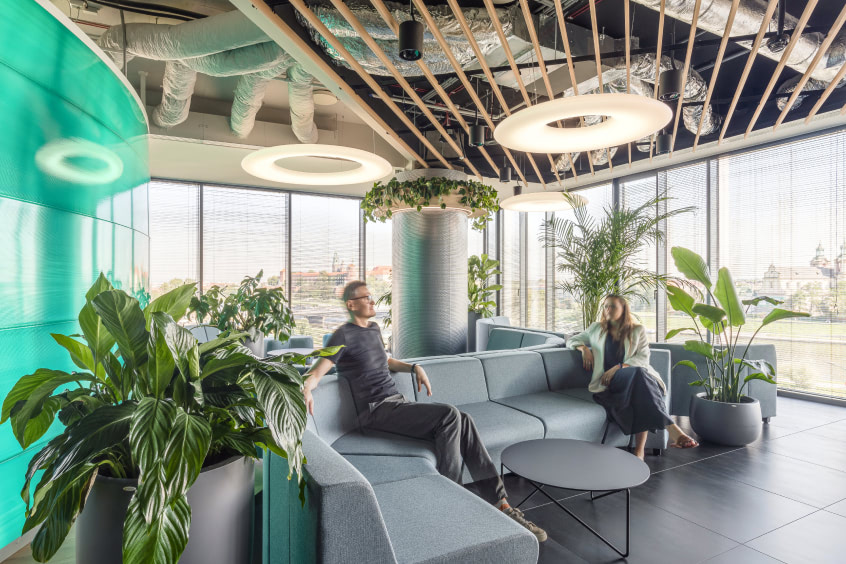
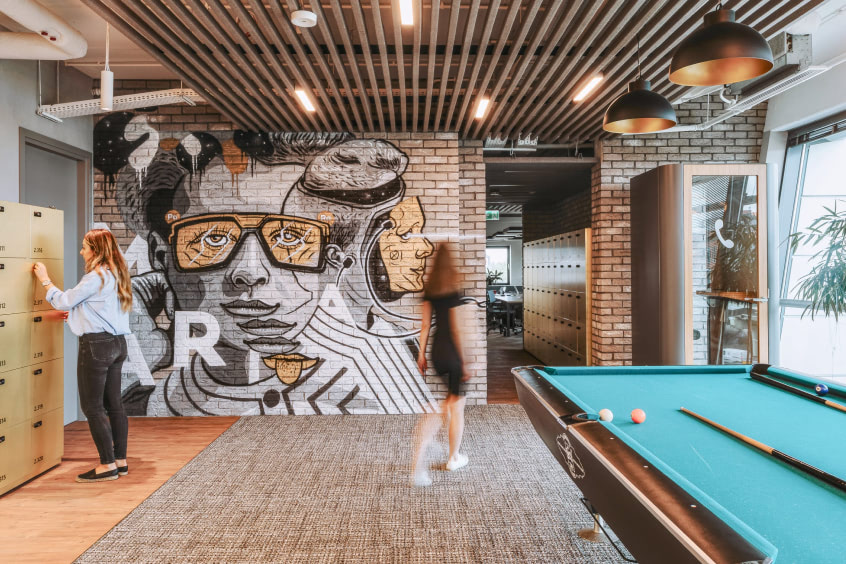
Key Principles of Activity-Based Working
1. “Fit the Task”
In today’s working environment, a one-size-fits-all workplace just won’t cut it. Employers need to provide a proper work environment for a wide variety of tasks, from focused work to collaboration to brainstorming to video calls. Workspaces that can match both tasks and personal work styles give employees the best chance at success and well-being. In turn, workers have more support and control over a wider range and more complex set of work tasks.
2. Employee Agency
To achieve their best results, people need to work in ways and in environments that fit them personally. Approaching office design with an eye towards personalization empowers employees to manage their own work environments. Employees also gain the freedom to choose where, when, and how they work based on their tasks, preferences, and work demands. This kind of employee agency is becoming increasingly important for retention and productivity. ABW fosters a sense of ownership, responsibility, and trust at work. Employees have the agency to determine how they work best, and employers can rest easy knowing that such empowerment drives the best results for the organization.
3. Well-Being
Especially important in today’s work environment is an emphasis on balance and well-being. A new report by Deloitte and Workplace Intelligence found that workplace well-being is floundering while highlighting that employers must consider employee well-being to retain talent and ensure long-term organizational success. According to the report, 60 percent of employees, 64 percent of managers, and 75 percent of the C-suite said they would seriously consider quitting for a job that better supports their well-being. The report, published in 2023, emphasizes a growing trend in prioritizing well-being, as these numbers reflect growth from last year. ABW asks us to reimagine the office as a place where well-being and productivity can coexist. Workspaces that foster physical and mental comfort can, therefore, strengthen the longevity and productivity of organizations.
You might also like
Acoustic pods are becoming increasingly popular in workplaces around the world. 65 percent of office workers admit that noise significantly affects their efficiency, so it’s no surprise that many major companies treat acoustic pods as important elements of a modern and creative office. Soundproof pods provide solace for employees where privacy at work can be hard to come by.
There is a wide range of acoustic pods on the market, so we understand that it can be challenging to decide what products to choose. It's even more complicated if you are not familiar with acoustics nuances and jargon. So, how do you pick the right pod for the job? What features look into to make sure you’re buying a high-quality product and not just a cool-looking piece of office furniture? Let’s take a look at three essential pod features you’ll want to consider closely before making a purchase.
This article is a part of the Acoustic Pods Consumers Guide, which we created to address the most crucial questions about acoustic pods. The guide walks you through how to choose the right pod, place it within your office and introduce it to your team. Download your guide here.
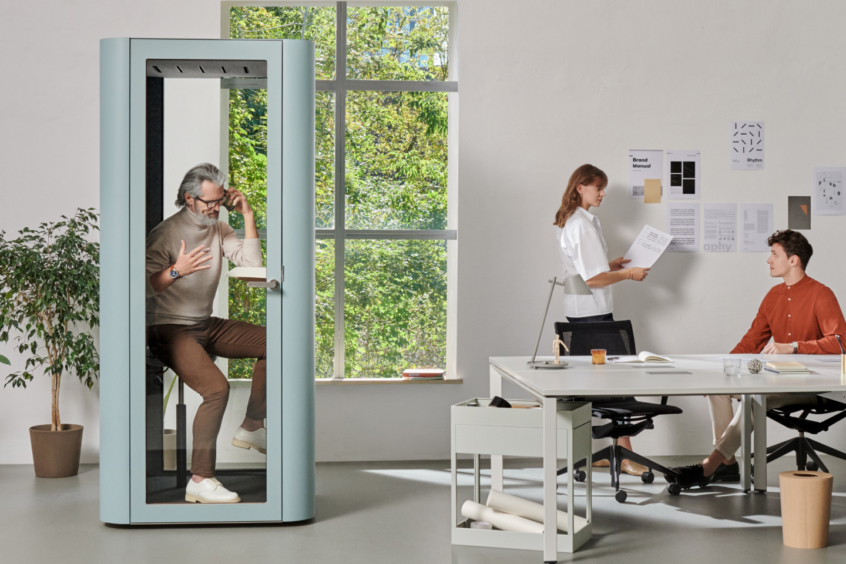
Soundproofing
Understanding soundproofing is a critical first step to evaluating a pod. The acoustic efficiency of different pod models can vary a lot. Some pods offer almost total sound isolation, while others have acoustic properties…on the label only. It’s worth taking some time to hear the difference.
→ The best way to check sound isolation is to do an experiment yourself. If it’s possible, visit a showroom, ideally with a colleague. One of you should step inside and then try to communicate and speak to the other, changing voice level. You should hear significant difference while talking through the pod’s doors. If you are alone, take a Bluetooth speaker and test it by playing your favorite song loud. Perform the experiment in quiet surroundings to ensure the soundproofing level will be noticeable and not disturbed by background noise.
→ Check the pod’s internal sound isolation as well as its external one. A high-quality pod should have slightly less effective external isolation so that when users are in the pod, they can hear a loud sound (like an alarm going off) outside of it. This is an important design feature for safety. At the same time, you want good internal sound isolation so that conversations are private and don't let too much sound escape into the ambient office space.
→ Don't look only at sound-insulation performance. Also, check the pod's internal reverberation time. A high-quality pod should limit reverberation time to 0.1 – 0.3 seconds. It will improve audibility during phone calls or video calls.
Good to ask: Checking the acoustics, ask producers to provide reliable information about the sound isolation parameters of the whole finished product, not only its particular elements (i.e. walls and doors separately).
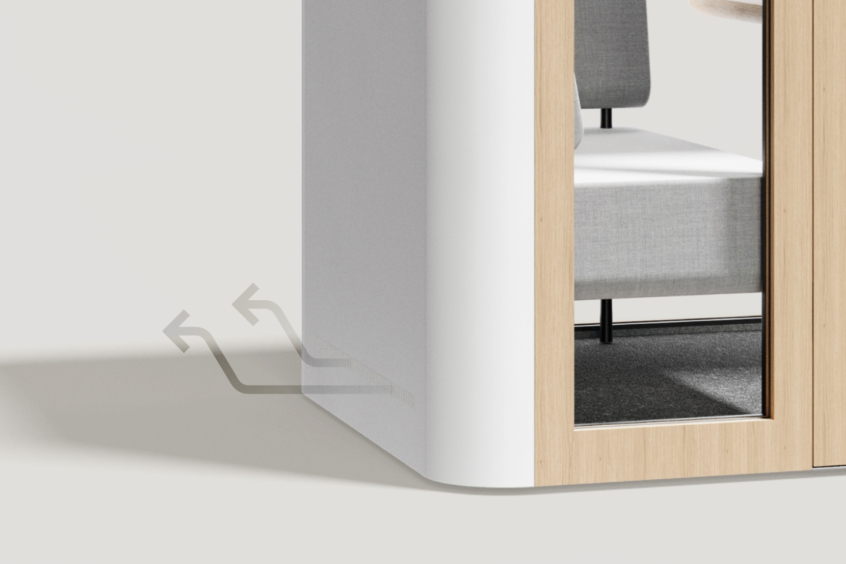
Ventilation
Adequate ventilation is often overlooked. Why? It’s not well-known that ventilation is crucial to a properly functioning acoustic pod. To ensure a pod is comfortable and enjoyable, especially when working inside for a long time, it has to be equipped with first-class ventilation: silent but very effective.
→ Pay attention to the noise caused by running fans, both inside and outside the pod. The outside noise is something clients often forget to check. But remember that fans that are too loud can easily disturb employees whose desks are close to the acoustic pod. The noise caused by fans should not be higher than 37 dB outside and 40db inside.
→ Check the airflow of pod ventilation, which tends to vary with the size of the pod and the number of people inside. In order to provide a comfortable atmosphere inside the pod minimal airflow should reach at least 40m3 per hour, per person.
→ Check the pod’s occupancy sensor and whether the ventilation continues to work for a while after users leave the pod. Continuing ventilation provides fresh air for the next user. That functionality may sound obvious, but it's not offered with every pod.
Good to know: The same ventilator can vary in performance depending on the place or mechanism where it’s installed. So, producers should measure these differences and inform you about the airflow level of the ventilator installed inside the pod, not only the level on the label of a ventilator.
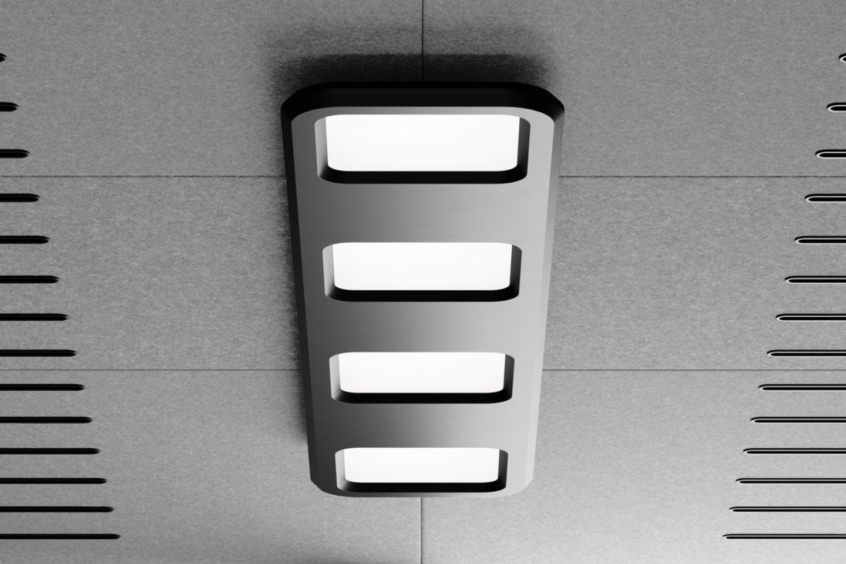
Lighting
Lighting is another significant acoustic pod feature. Adequate brightness inside the pod boosts visual comfort and protects users from eyestrain. This is of course crucial when choosing a pod for individual-focused work.
→ Make sure the light provides at least 300 lux for sitting positions. If you plan to use the pod as a place for extended and focused work, make sure it has an additional side lamp. Also, consider adding a control panel to allow a user to adjust the light's intensity to his individual needs.
→ Ensure that the light color temperature is 4000 Kelvins which is the recommended level for office work, as it fosters creativity and allows you to focus more easily.
→ Ask if the pod has an occupancy sensor to limit energy consumption and to let you not to bother switching the lights on while entering the pod.
Good to ask: Remember to ask about the Lux level (not only the Kelvin, Watts, or Lumens). Lux is the most adequate scale because it measures the total amount of light that falls on a working surface. To learn more about different scales of light measurement, check our Jargon Buster: Lighting.
Want to learn more? Check out the complete Acoustic Pods Consumer Guide here.
You might also like
Without privacy, some people feel drained and find themselves without the energy and space they need to think freely and creatively.
It’s 3 P.M. and you still haven’t been able to regain your focus after lunch. You have multiple tabs open, the end-of-month report on your mind, coworkers chatting nearby, and a new Slack notification every few minutes. Sure, the GIF on Slack gives you a laugh and the camaraderie of the office makes work lively, but the bustle keeps you distracted.
We’re all overly familiar with distraction these days. It’s a daily struggle to focus on the many and diverse tasks we set out for ourselves. It’s probably no surprise then that scientific evidence disproves the so-called “multitasking myth”: it’s false that our brains can effectively focus on two or more tasks at once. However we try to convince ourselves that “Yes, we absolutely can multitask!” it is actually impossible for 97.5 percent of us. So how can we overcome distraction and harness the power of focused work? How do we optimize our brain’s architecture rather than work against it? In this article, we’ll cover a few ways you and your team can reclaim your time and attention for a more healthy, creative work life.
How to Achieve Healthier, More Creative Work
Studies show that productivity and efficiency increase when people focus on one task at a time. This is because it takes our brains time to gauge new information and engage with that information each time we switch tasks or try to refocus after getting distracted. And while we certainly cannot claim to be rid of distraction all the time, a few company policies and a bit of creative office design can help get everyone in the groove of focused work.
1. Provide Opportunities for Privacy and Quiet
Teams consist of not only different roles and responsibilities, but also many personalities that require varying environments for optimal well-being and productivity. When team members can leverage their strengths rather than battle their weaknesses, each person can be more focused and engaged in their role. Therefore, it’s important to recognize that not everyone works in the same way. While some people feel energized by the hustle and bustle of an office, others require peace and isolation. Without privacy, some people feel drained and find themselves without the energy and space they need to think freely and creatively. An office designed with retreats that offer solitude and quiet can accommodate a wider range of work styles. Leverage soundproof pods, like our Space M pod, or an acoustic privacy screen, like Cone, to give people the opportunity to concentrate more deeply, even in open office plans. Privacy and peace help the full range of personalities among us maintain the energy and creativity needed to produce excellent and innovative work.

If your team sometimes works from home, carpets, a room divider, books, curtains and other objects in the room can all help with sound absorption.
2. Add Flexibility to the (Home) Office
According to Pew Research, even those who have been able to work from home during the coronavirus pandemic face distraction. Ambient noise, including other family members on remote work or school calls, add to all the regular digital distractions. Perhaps even more than in an office, remote workers need to multitask to make it through the day. If your team sometimes works from home, carpets, a room divider, books, curtains and other objects in the room can all help with sound absorption. Placing a few items in the workspace can improve the acoustics of the room to reduce distractions from ambient noise and improve sound on conference and video calls.
Back in the office, Wall, a flexible acoustic panel, offers sound reduction, privacy, and separation when and where you need it most. Sound absorbers and privacy screens come in a variety of styles to match your office and some are even easy to install or light enough to move on the fly, so teams can nimbly react to whatever their needs are at any given moment.
3. Set Quiet Hours and Away Messages
Anyone glued to their computer screen or smartphone during the workday knows the impulsive urge to check email. The expectation for immediate, synchronous communication has only grown with technology’s firm grip on our day-to-day activities. And while messaging tools like Slack or Microsoft Teams claim to reduce email, they also add pressure for people to instantaneously respond to inquiries and messages. Developing simple company policies that reduce this pressure can help the entire office produce their most innovative and creative work.
For example, you can designate a time — even two hours a day — when the entire company agrees to not send emails, schedule meetings, or drop by colleagues’ desks. Set this as a recommendation and urge management to lead by example to show employees it really is OK to work without the distraction of email and messenger.
If setting a company-wide “quiet hours” proves too challenging because of varying schedules or because you work across time zones, you can also encourage people to set away messages on the days and times that suit them. This gives employees the flexibility to choose when they focus best and empower them to come back to emails and messages later, guilt-free.

Making collaboration enjoyable and a time in which all team members are heard can make all the difference to a productive and creative collaborative session.
4. Block Calendar Time for Deep Work
Georgetown University professor Cal Newport developed “deep work” as a strategy for intensive, distraction-free concentration that aims to produce our most innovative and valuable work. Although Newport recommends deep work every workday, that’s not realistic for most people. However, blocking out time on your calendar even once a week can help you work on your most cognitively demanding projects with vigor and, most importantly, without distractions. Scheduling the time, like you would any other meeting, both gives you a purposeful window to work on the task but also signals to colleagues that you’re not available for impromptu meetings, messages, or other distractions.
5. Make Collaboration Joyful
Finally, while reducing distractions in the workplace is key to creative work, collaboration is equally as important and fruitful for innovation and productivity. So far, we’ve talked mostly about how to combat the myth of multitasking and make it easier for individuals to focus on one task at a time. But what about when teams do come together? Making collaboration enjoyable and a time in which all team members are heard can make all the difference to a productive and creative collaborative session. Making sure the spaces we gather serve collaboration in the best ways is key. For example, reducing the reverberation time in a conference room improves speech intelligibility and reduces overall office noise. Techland, a gaming company in Wrocław, used a combination of Mute Blocks and Walls to improve the acoustics of their conference rooms and encourage better team collaboration experiences. You could also use a large, standalone meeting pod, like our Space L or Space XL pods, as a conference room that is specially designed with optimal acoustics, ventilation and lighting in mind. This is especially helpful in today’s offices, when some team members might tune in via conference or video call. Better intelligibility helps everyone feel both heard and included in collaborative team meetings and workshops.
Offices offer people an opportunity to socialize, collaborate, and exchange ideas. But giving people a respite from distractions and bustle helps them re-energize and focus when they need it most. A productive and healthy work environment that offers opportunities for peace and concentration not only reduces stress, but it also enables people with varying needs and styles to work in the ways that empower them to produce their best work. Using a combination of smart and empathetic communication policies and creative office design, individual contributors, teams, and an entire company can pursue their most ambitious endeavors.


